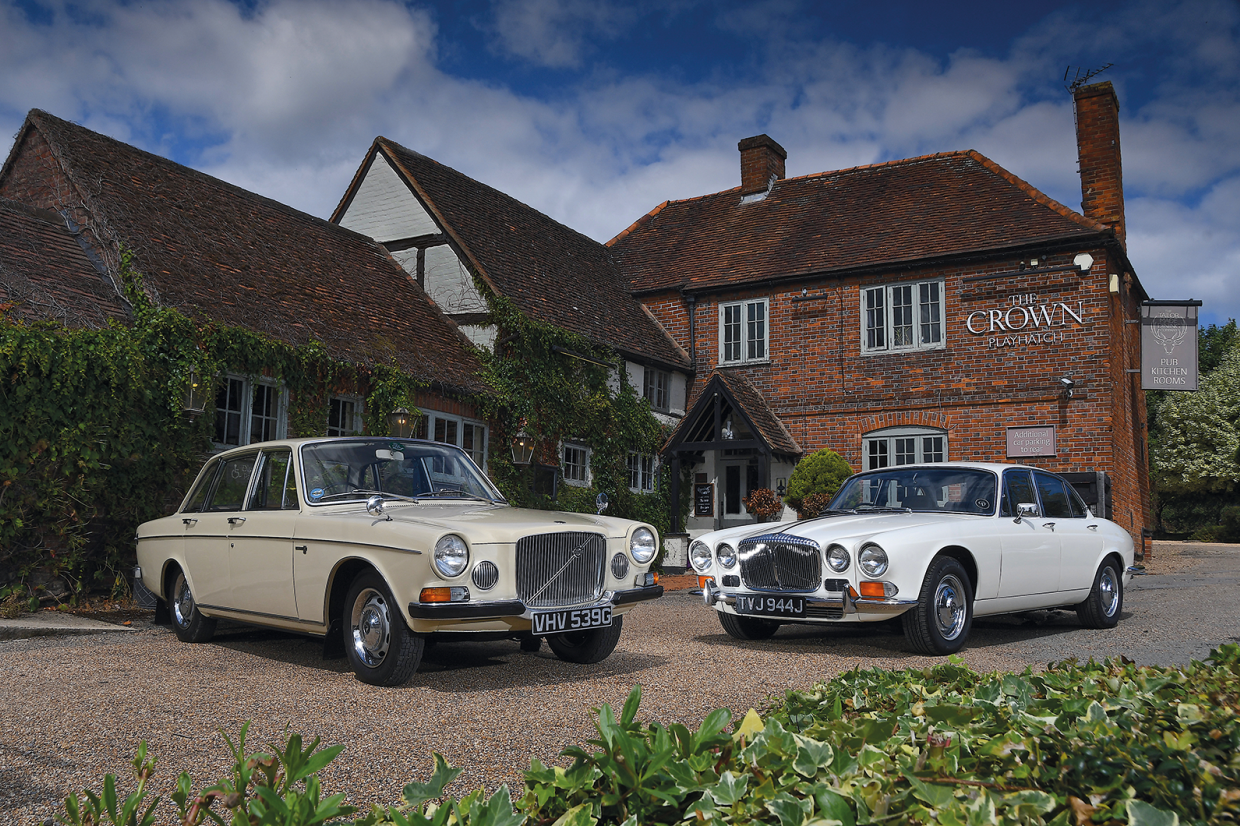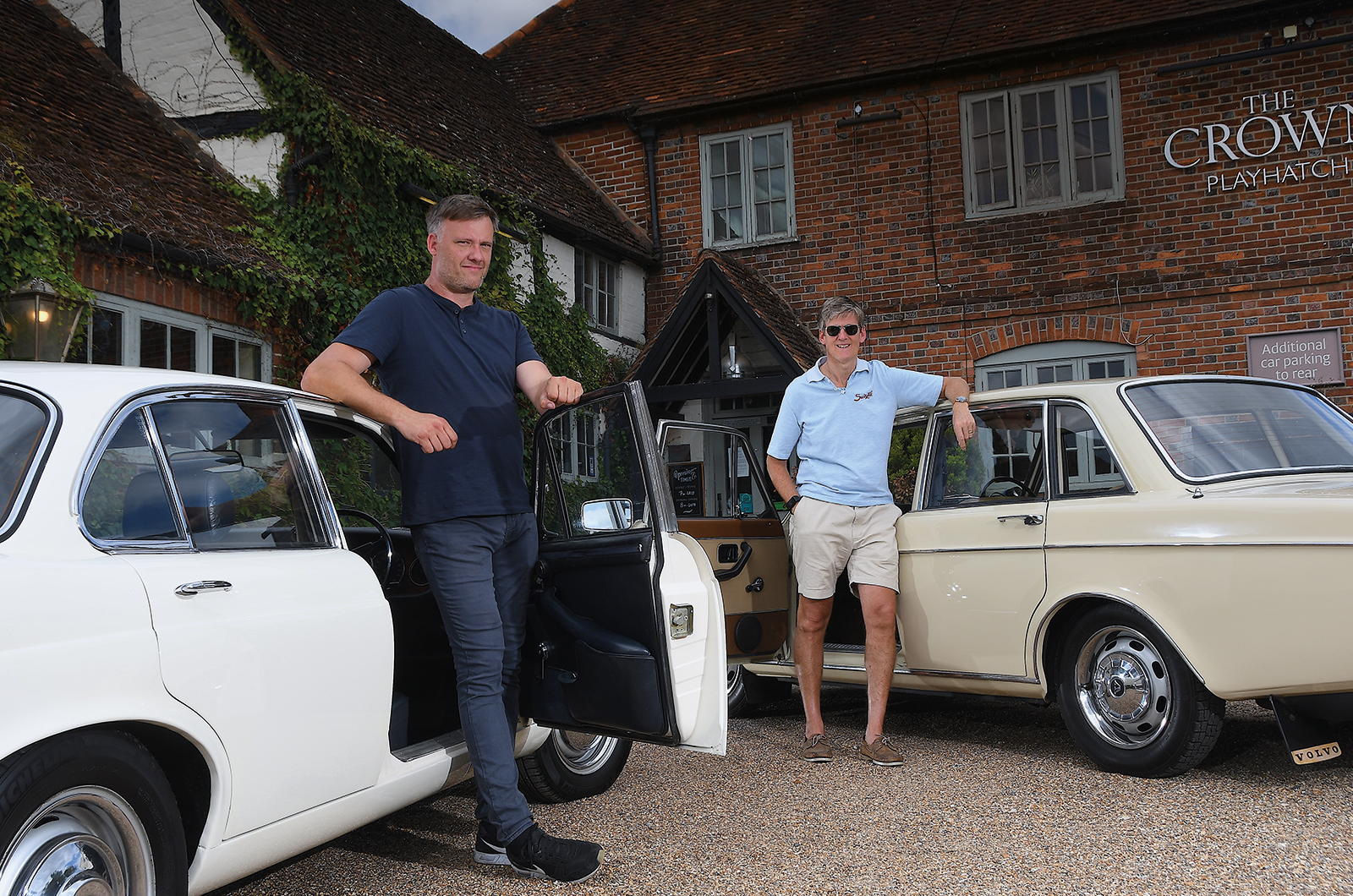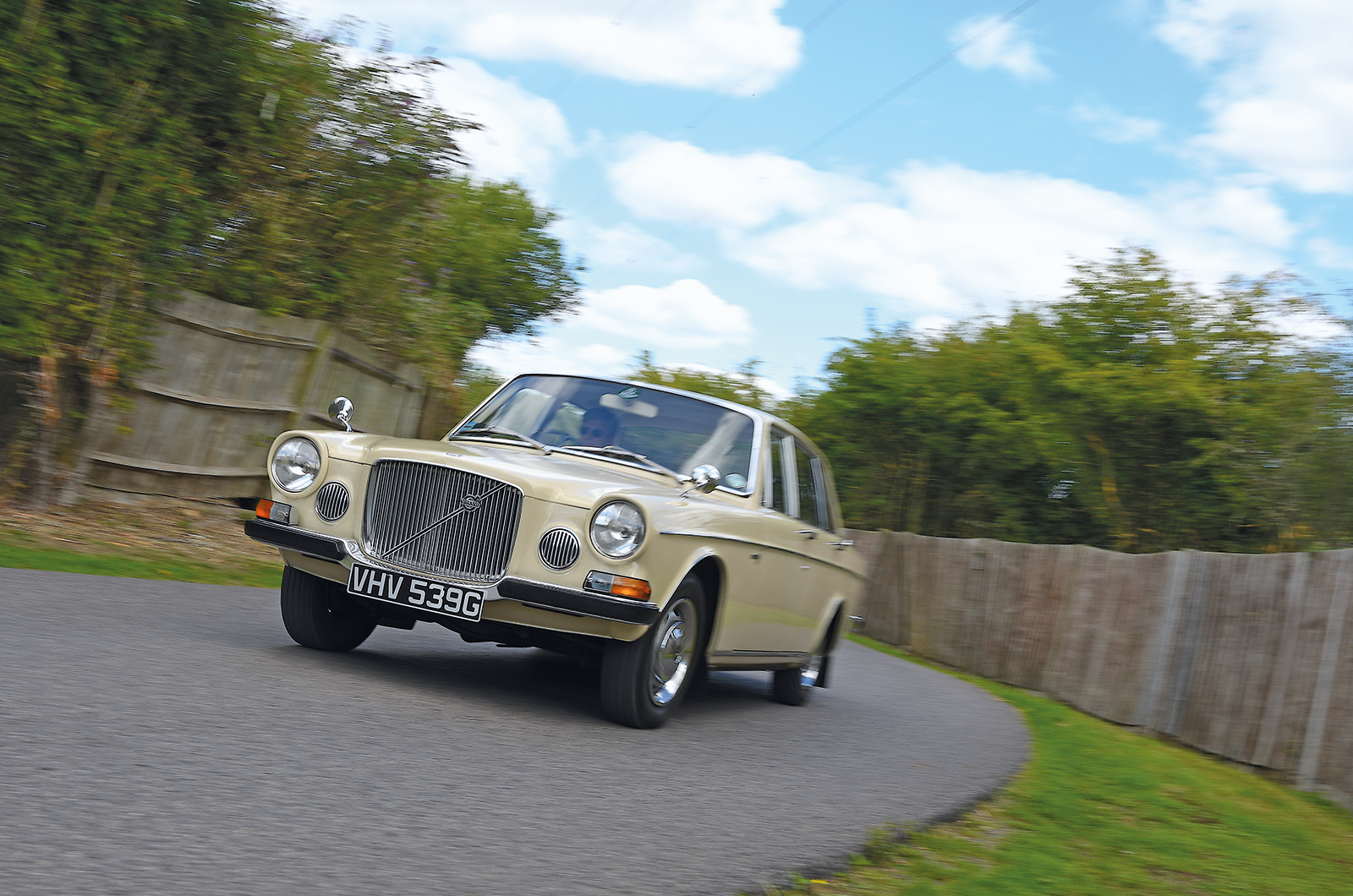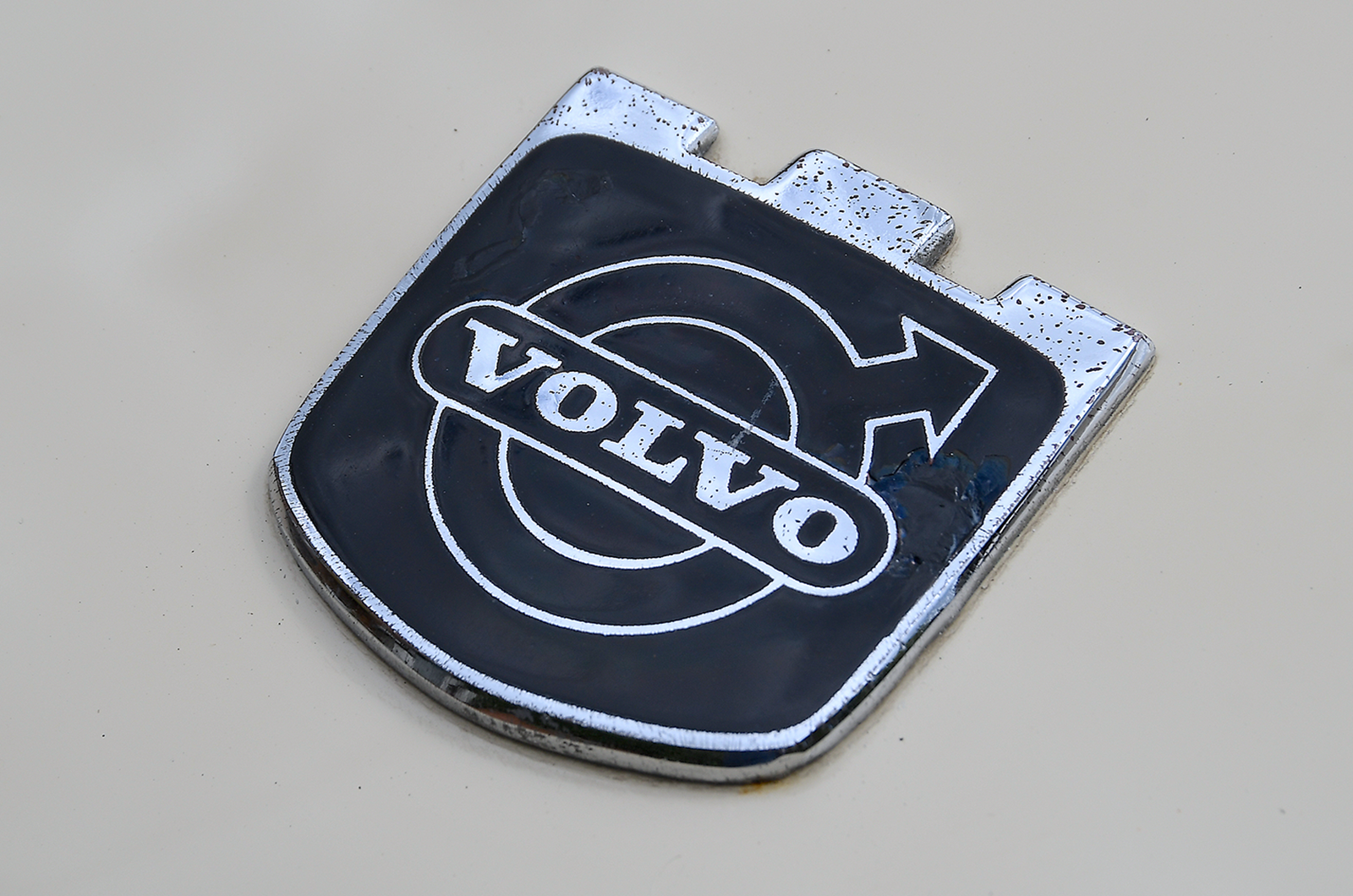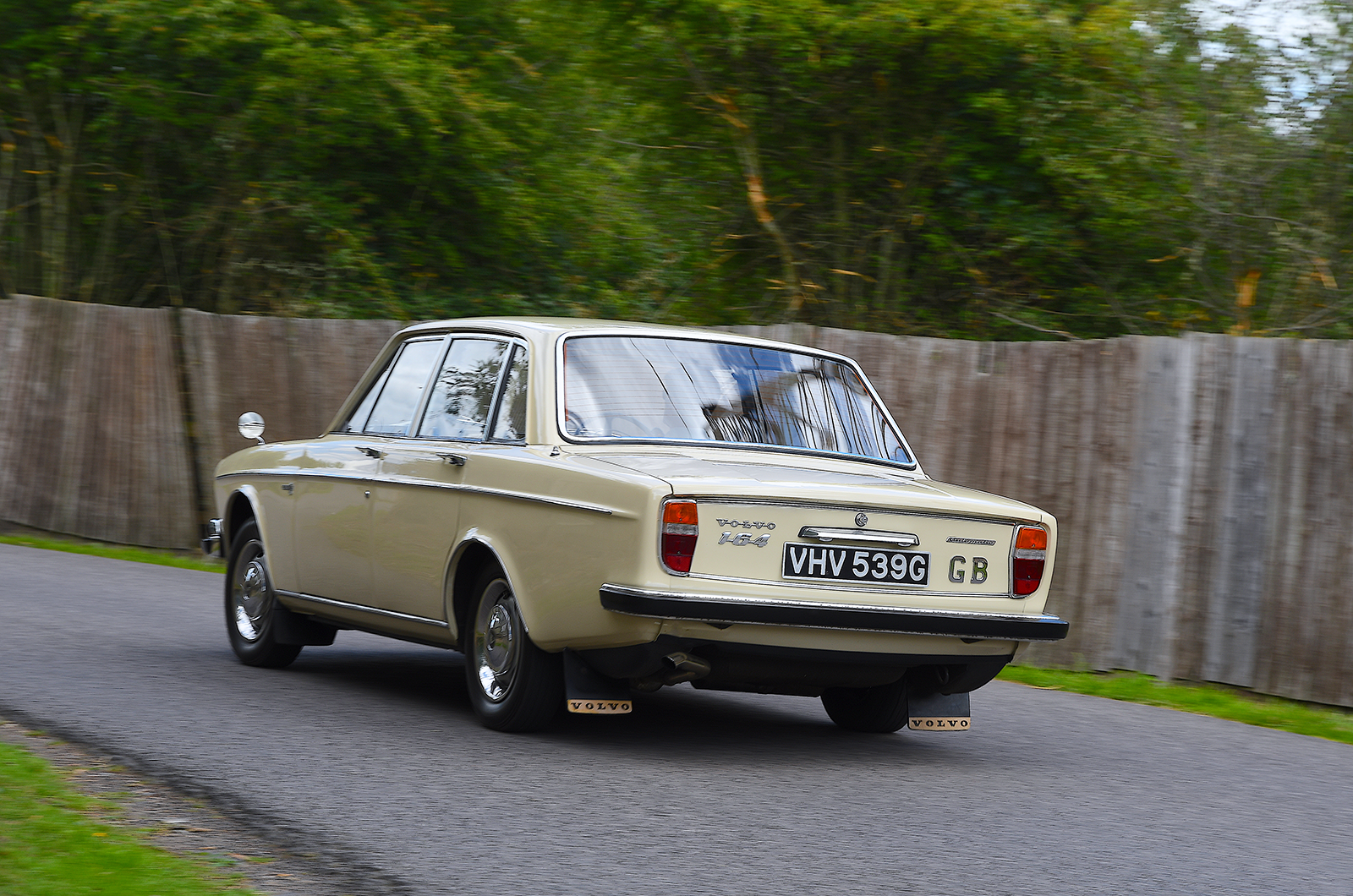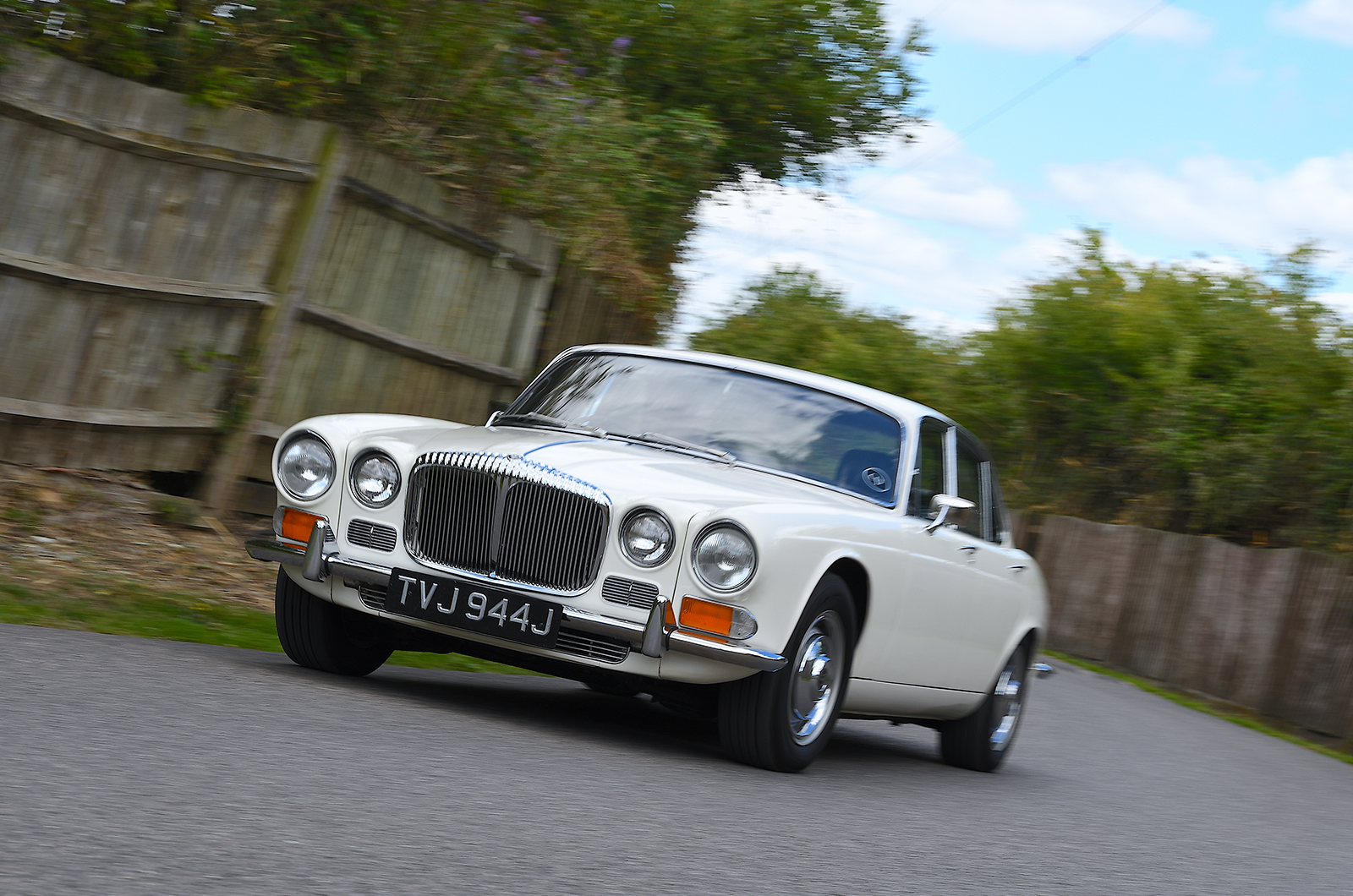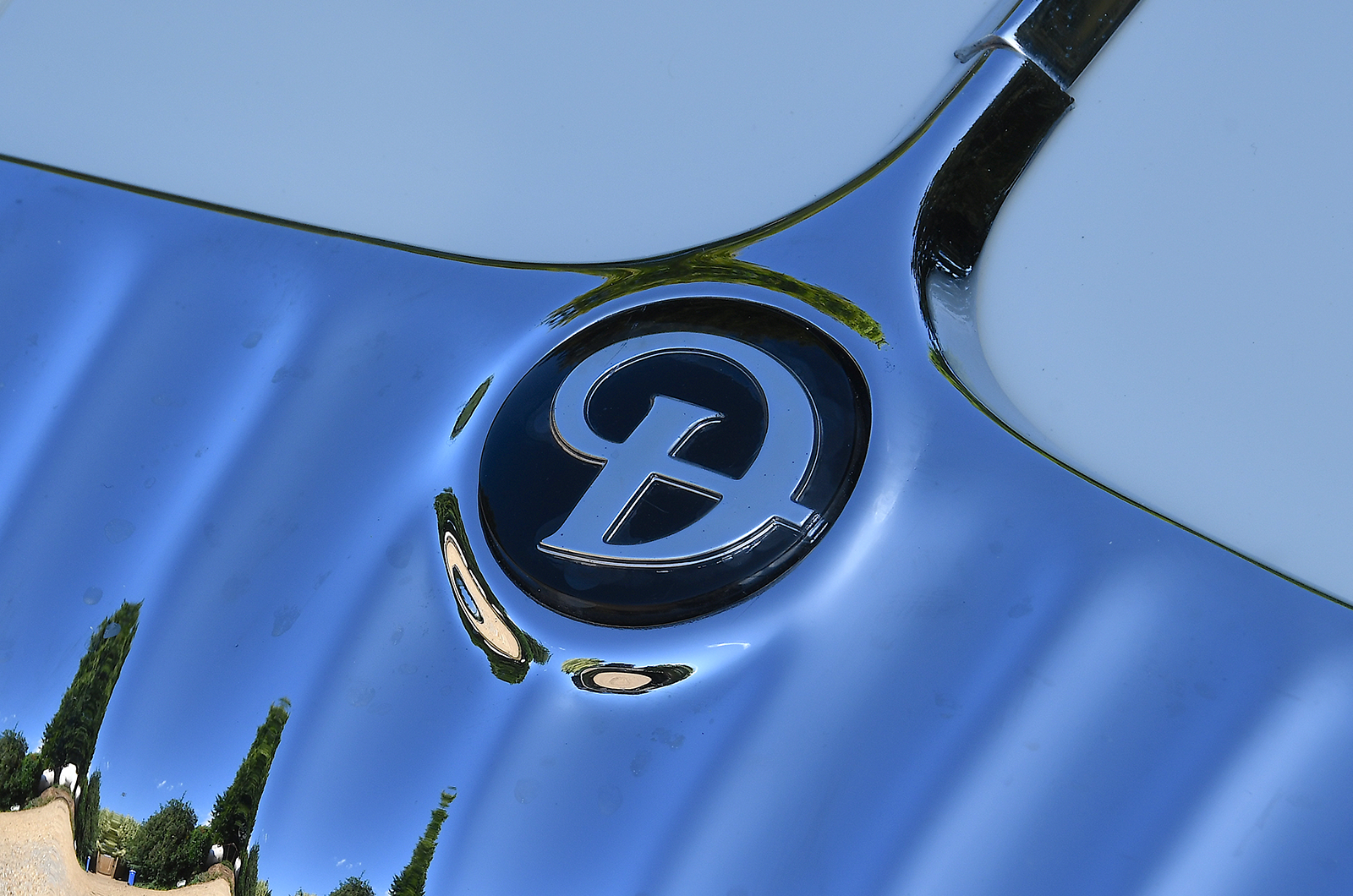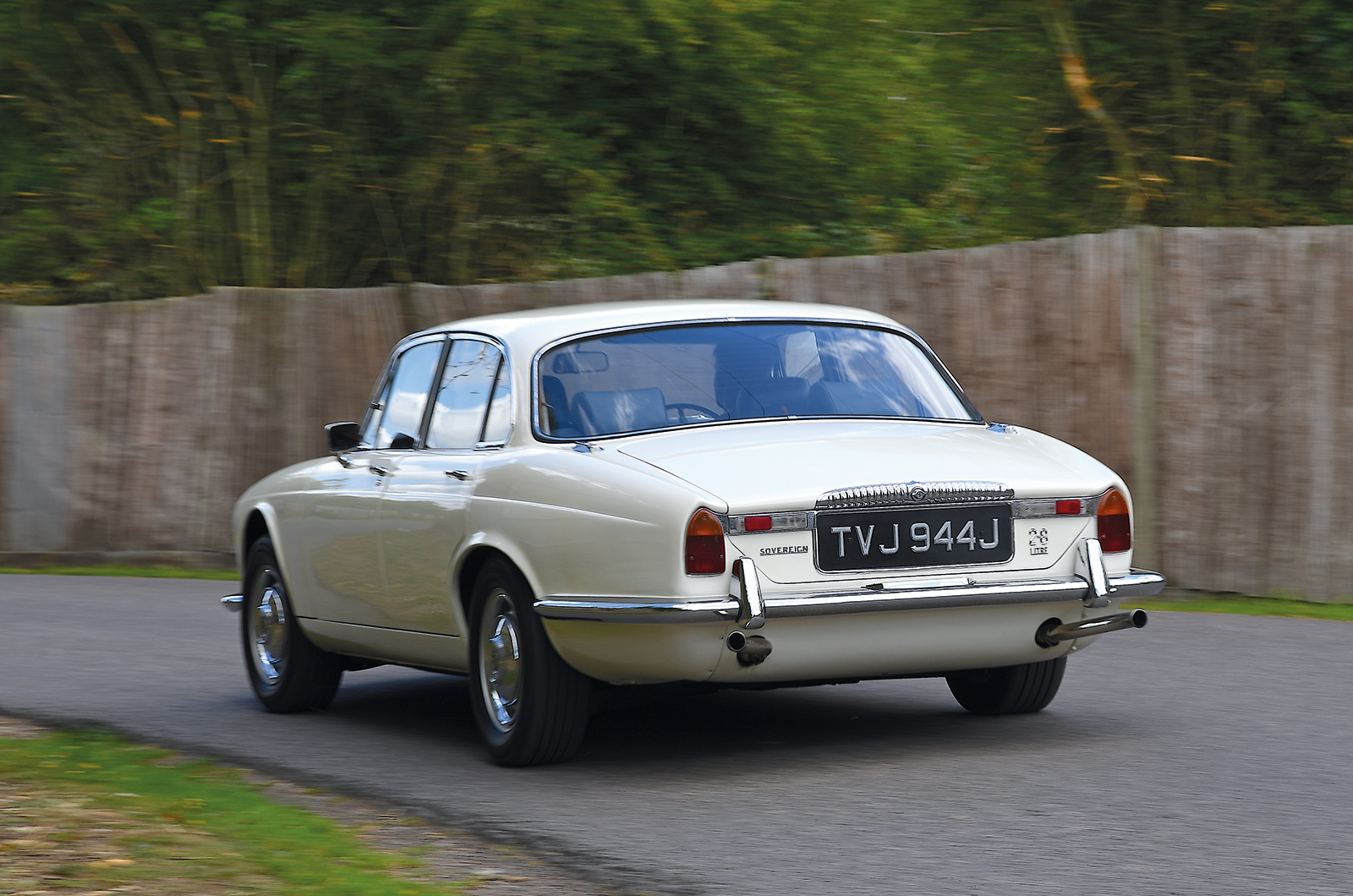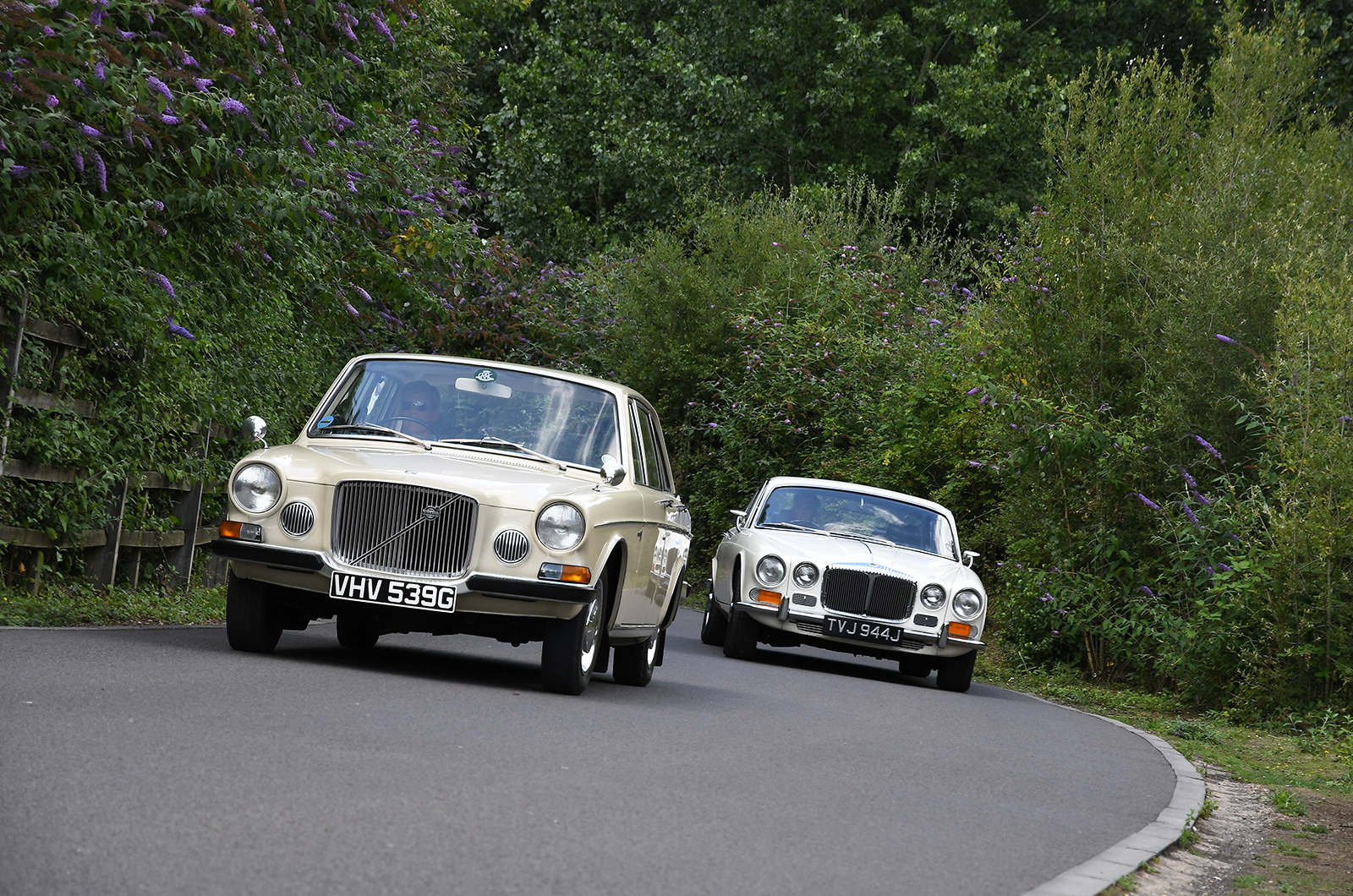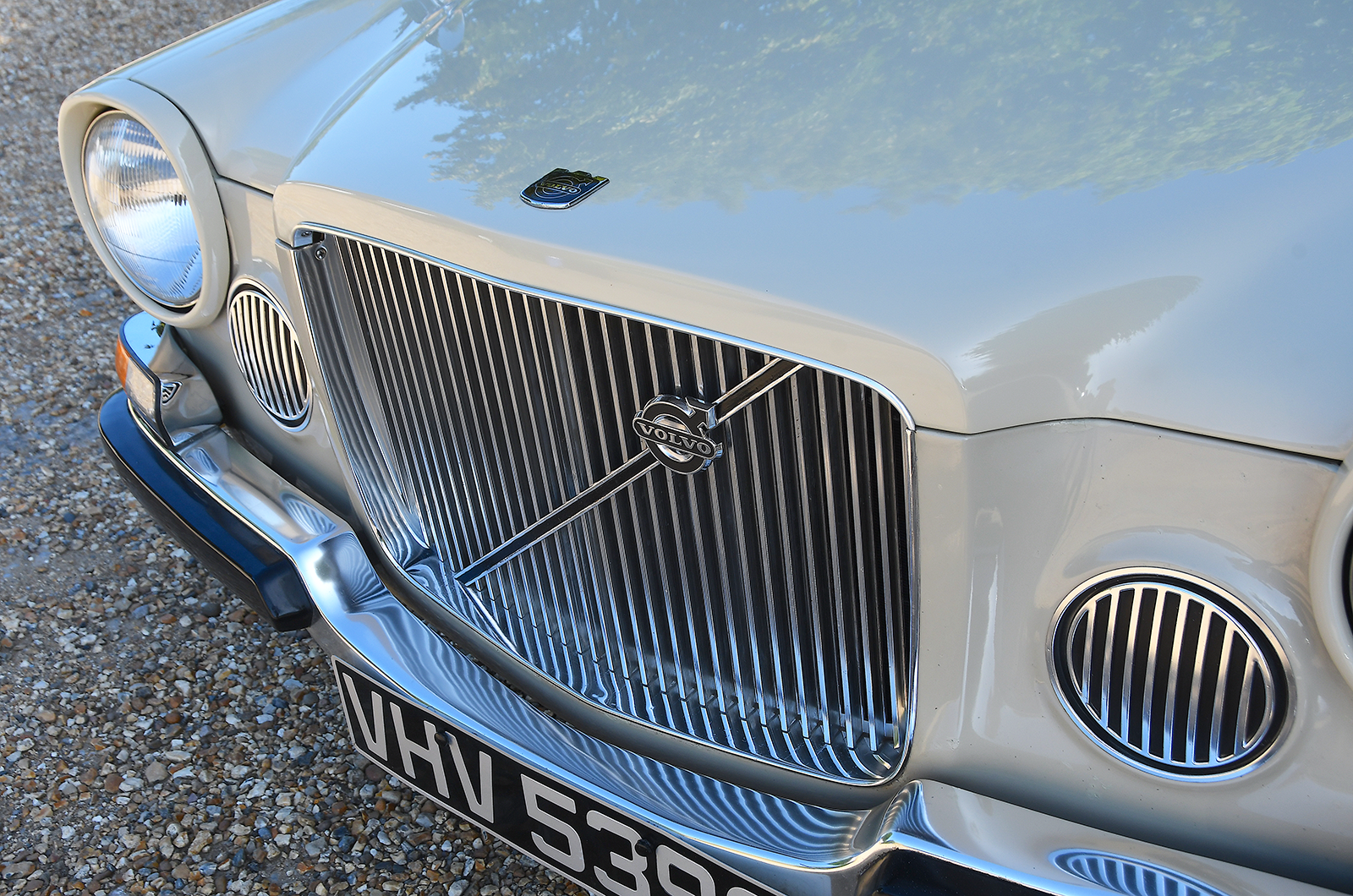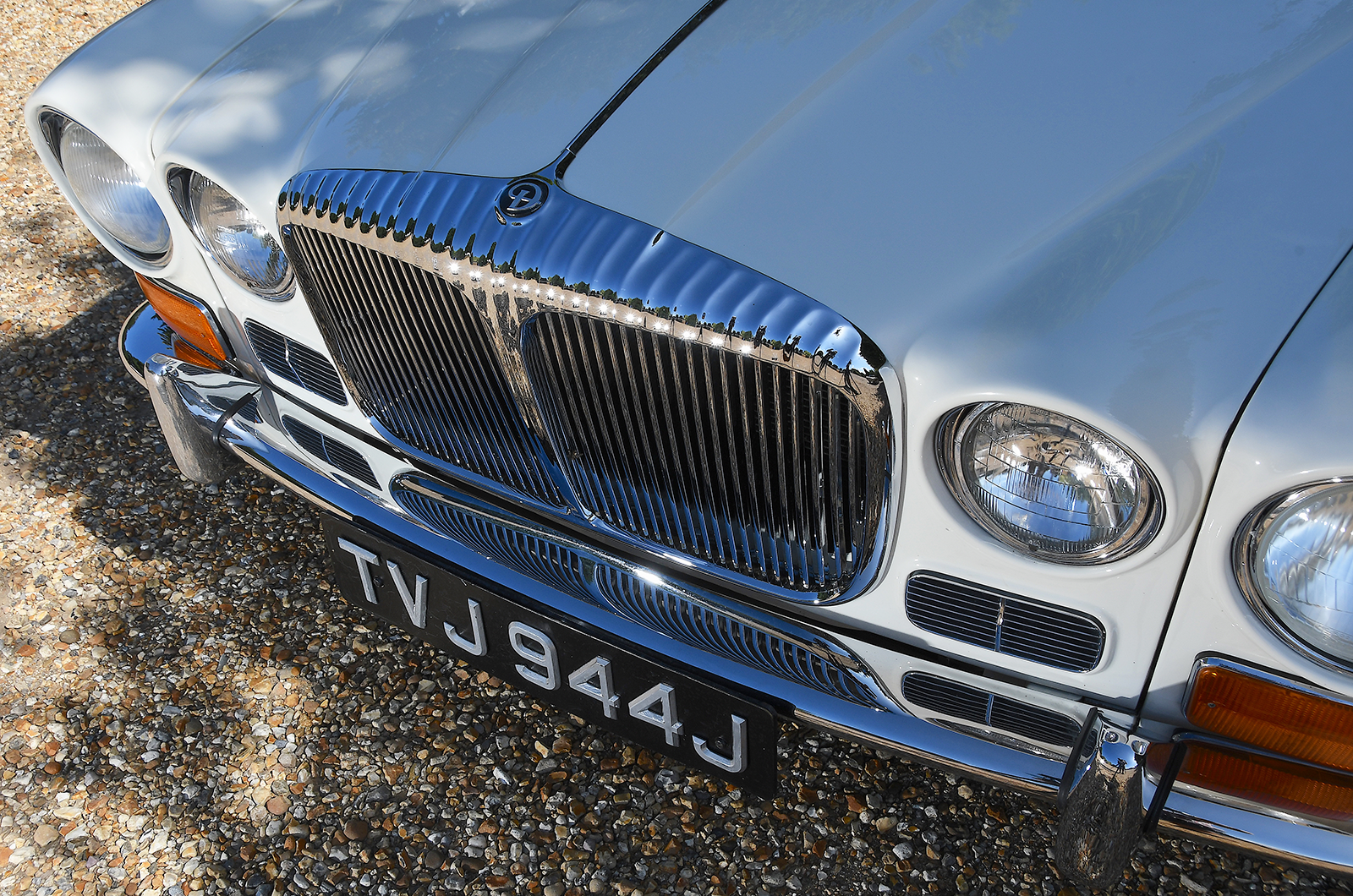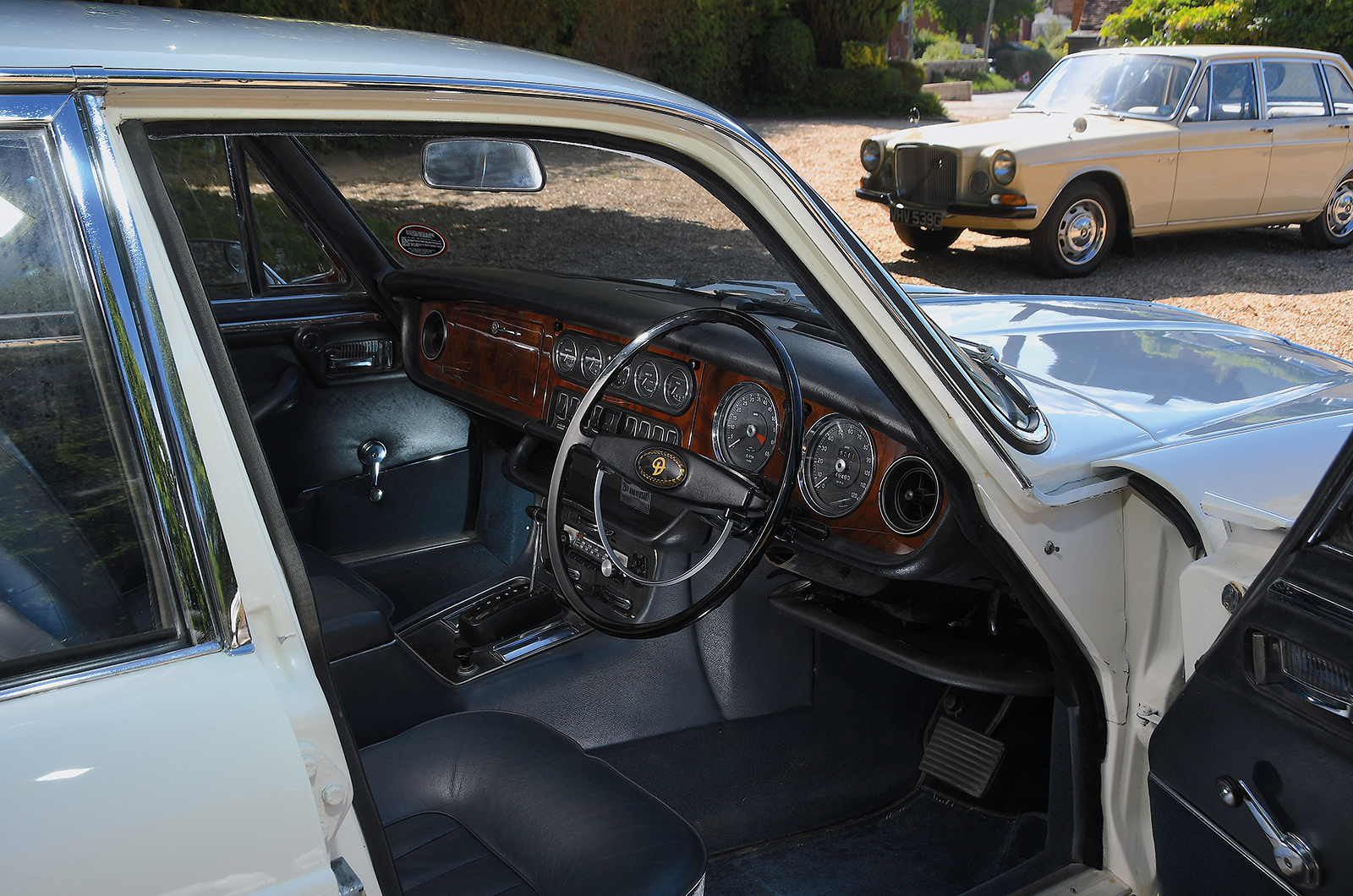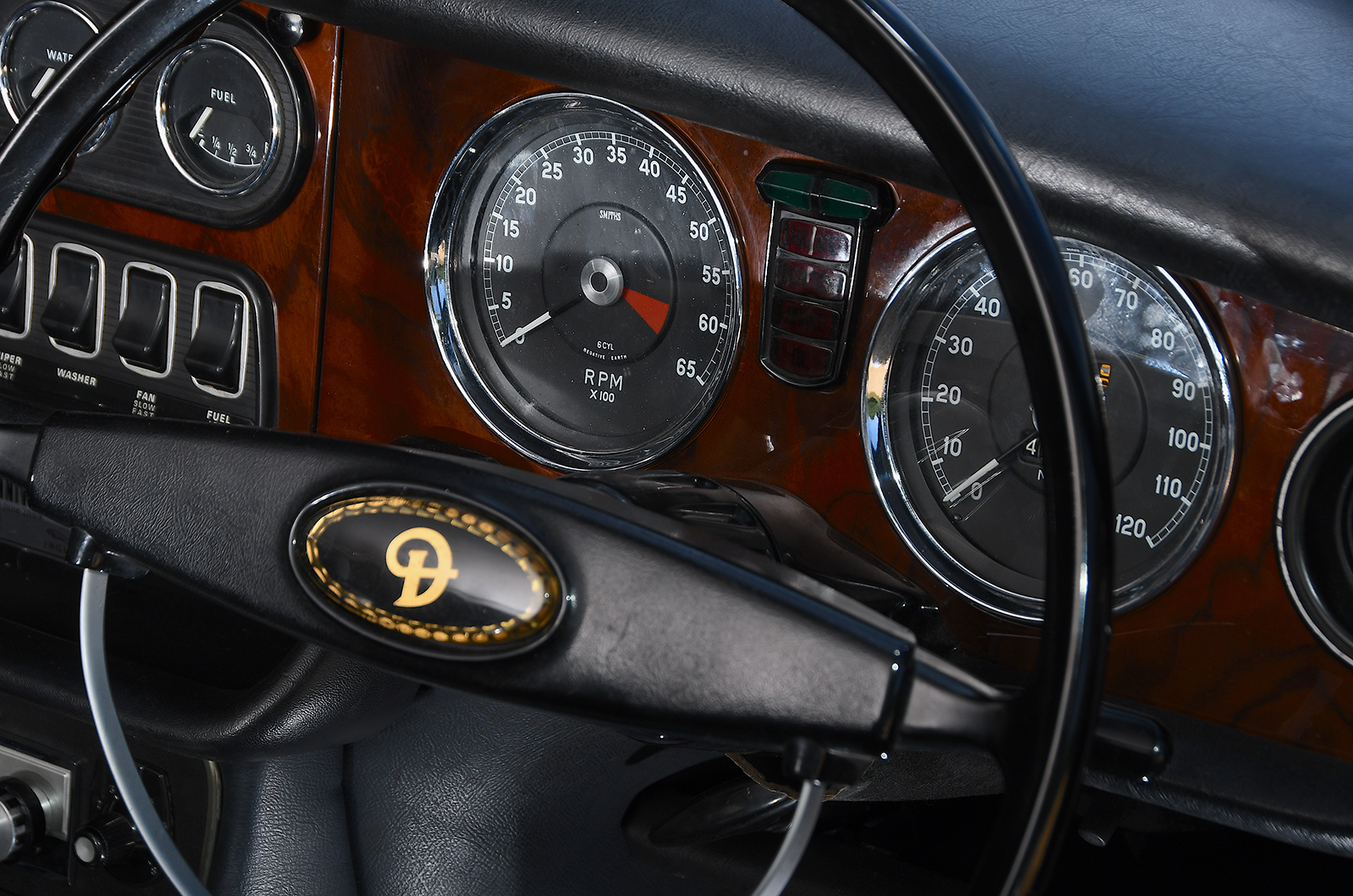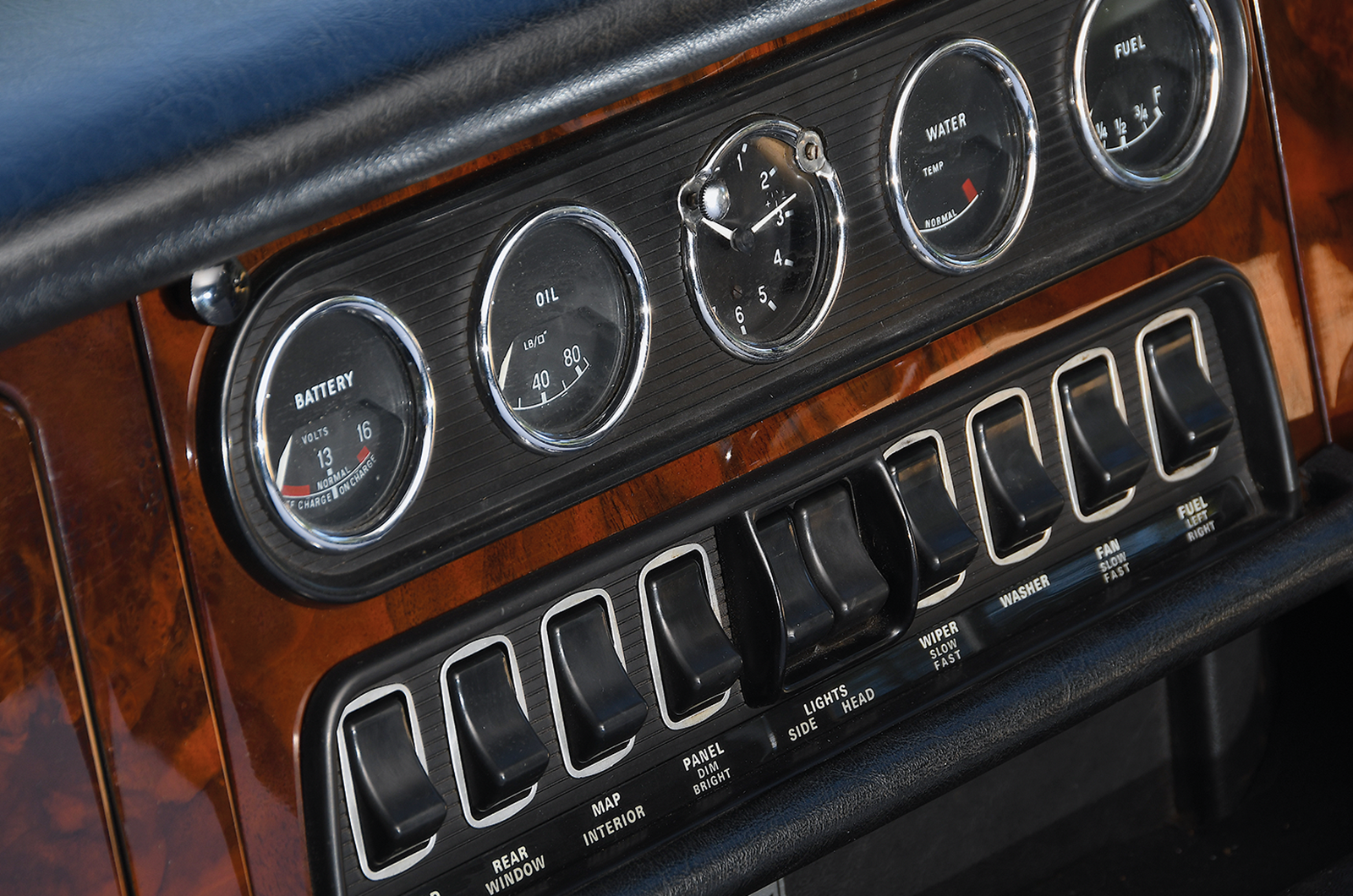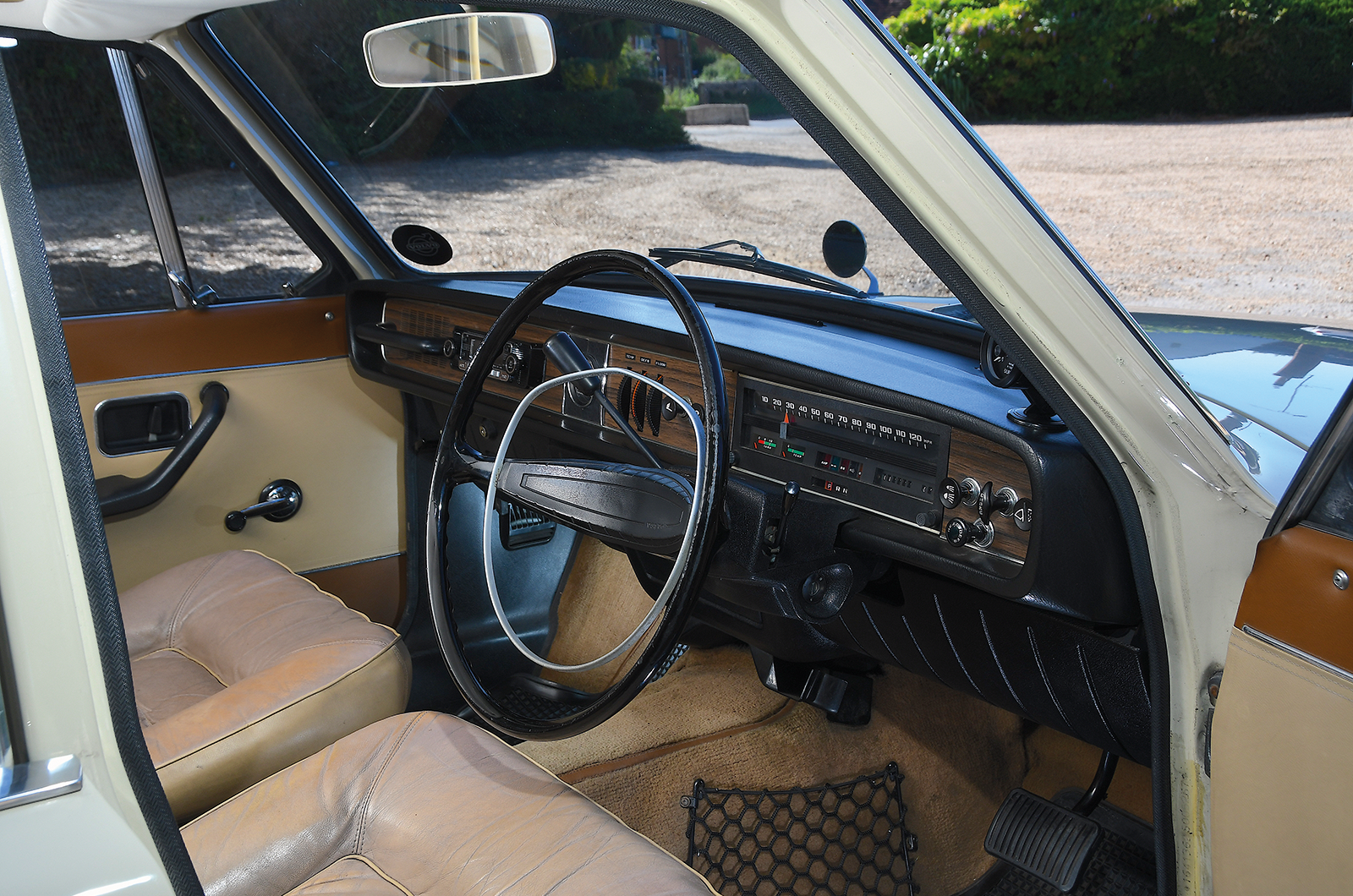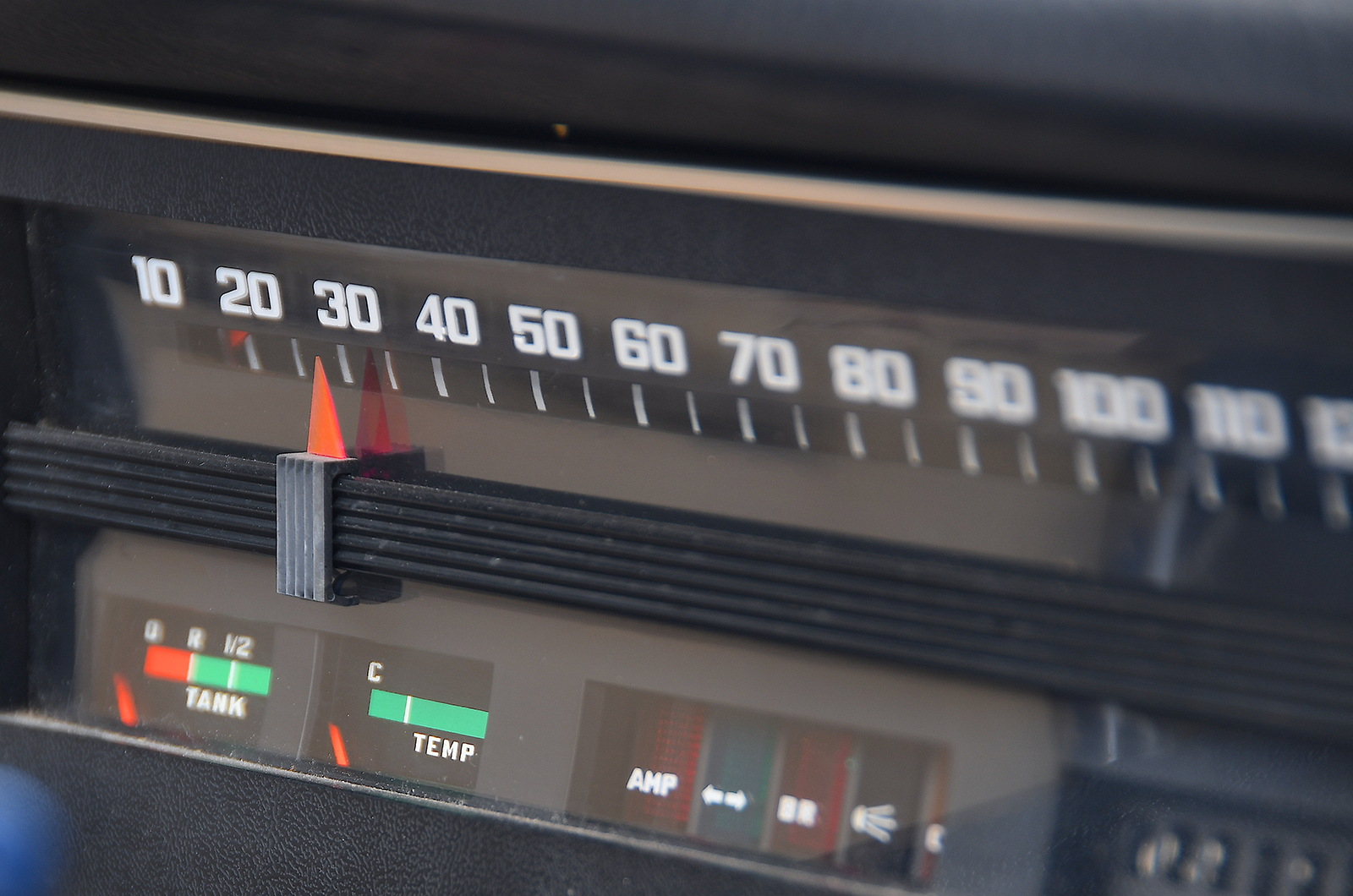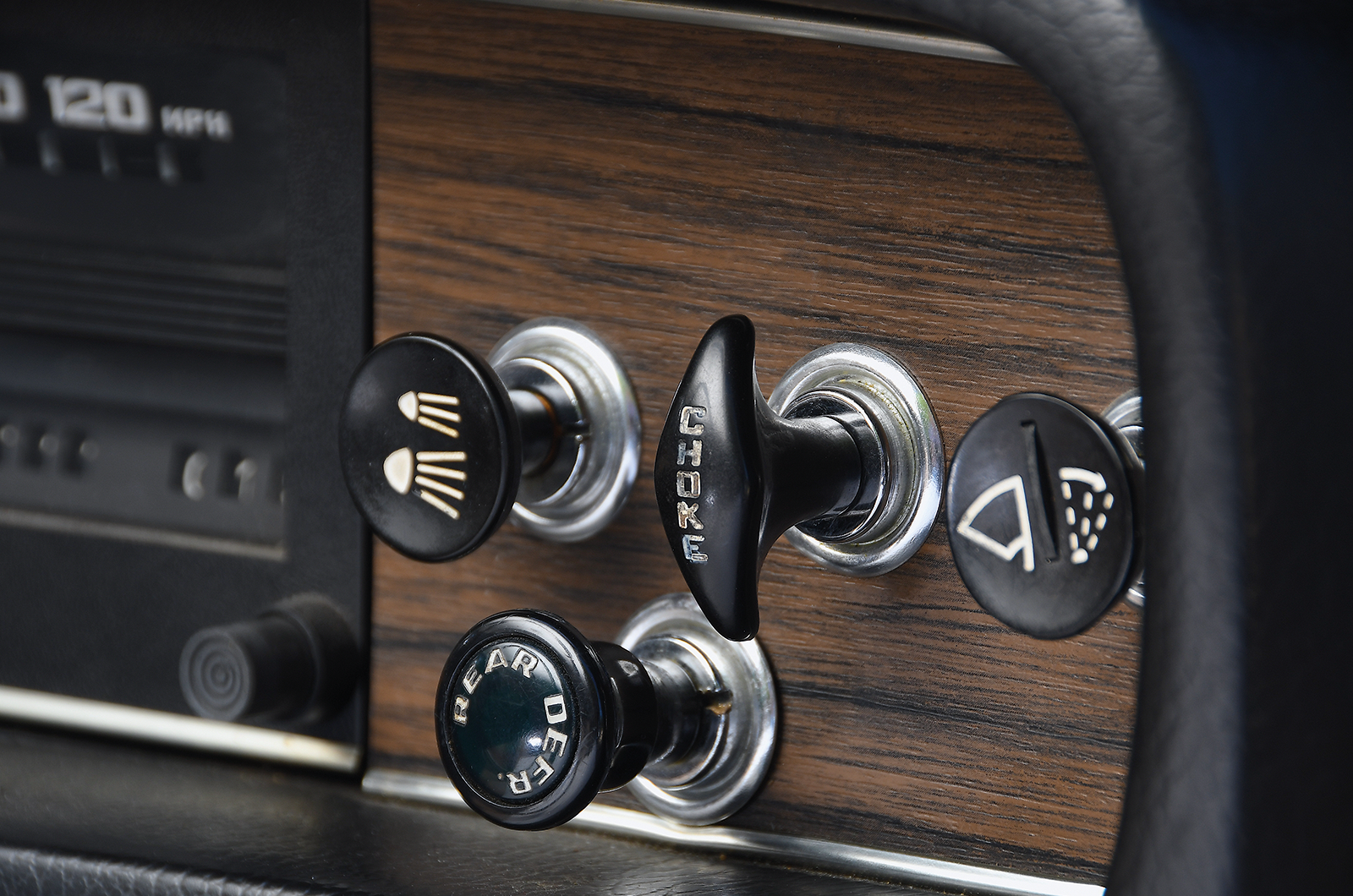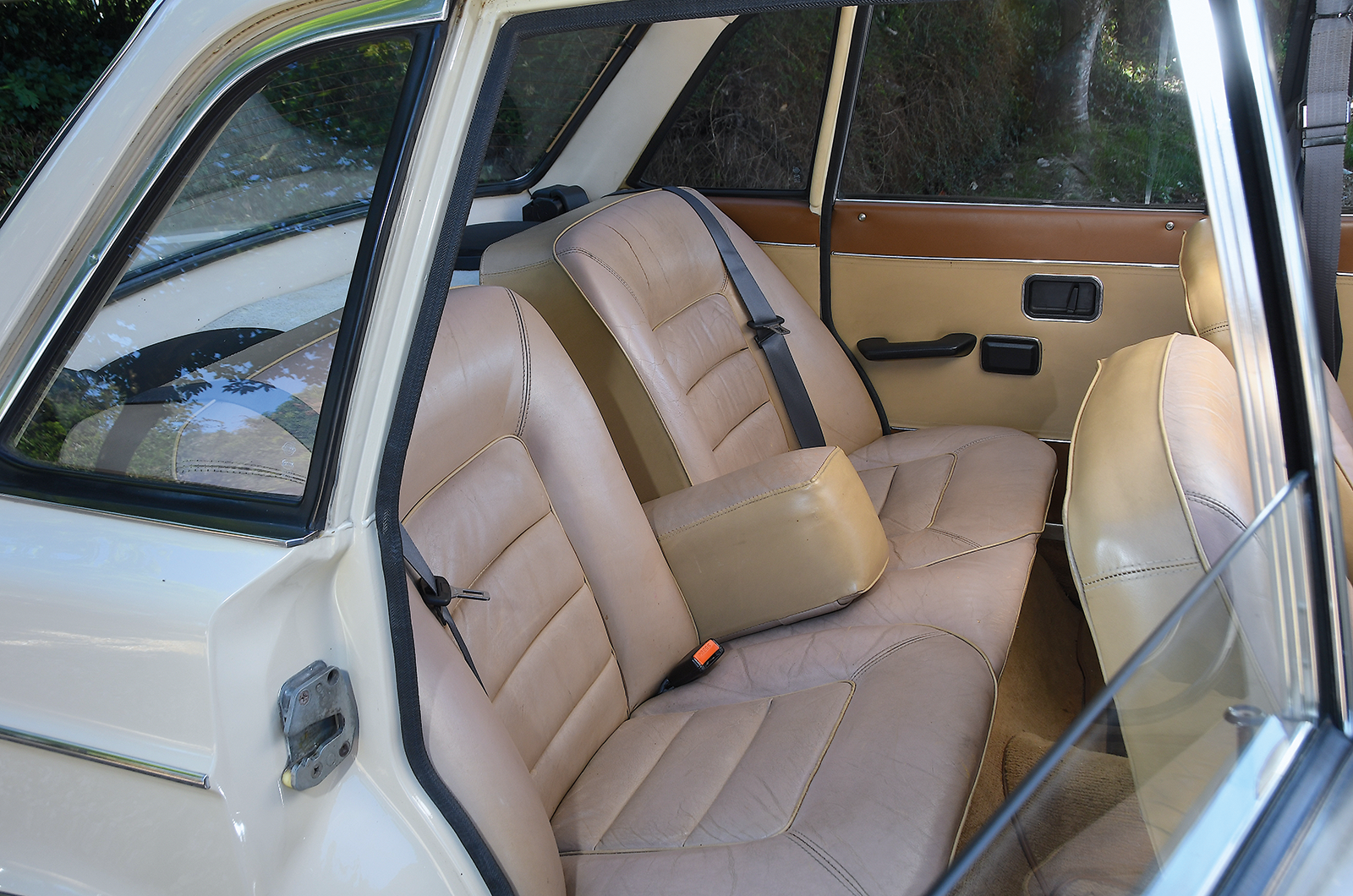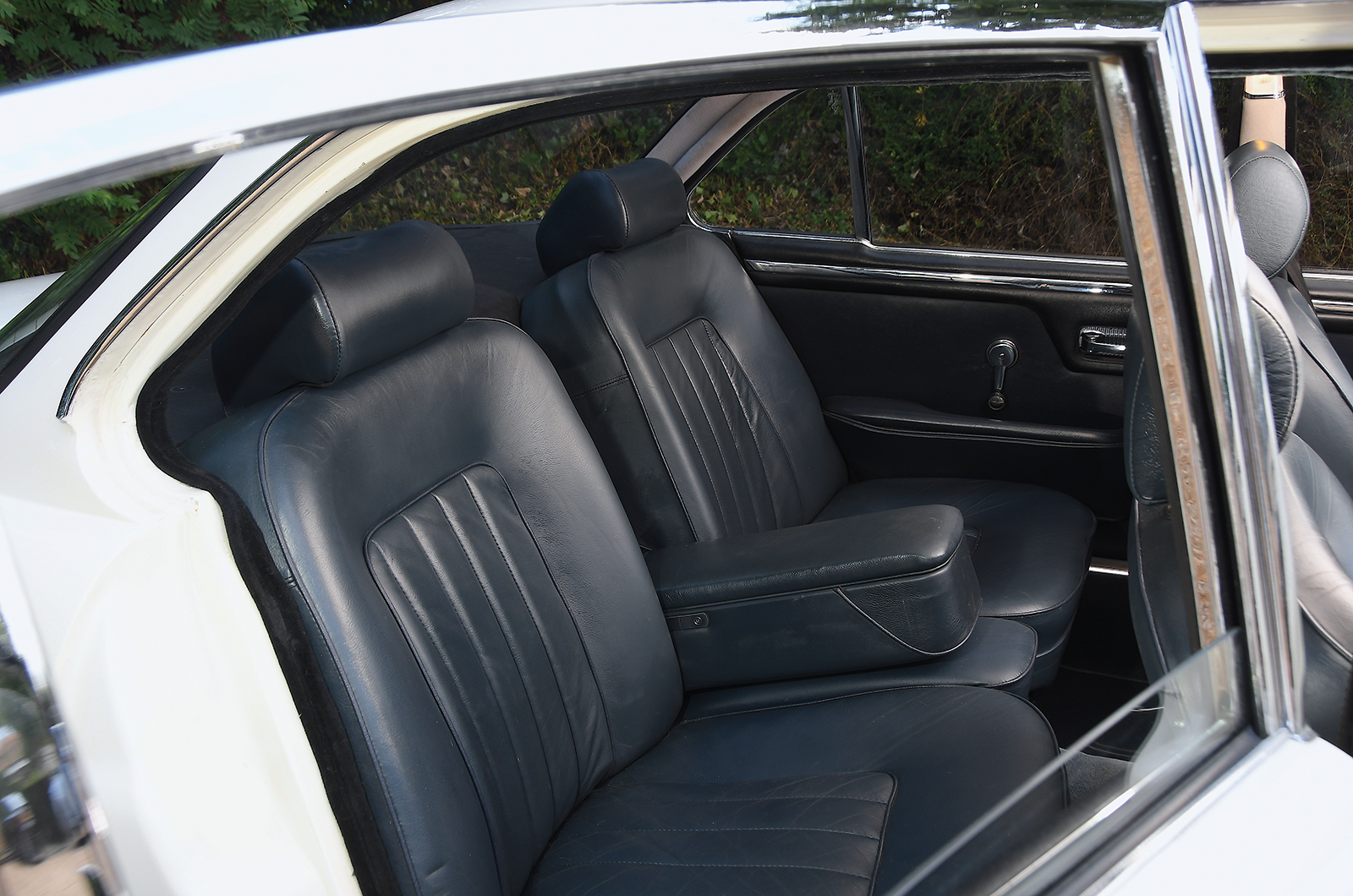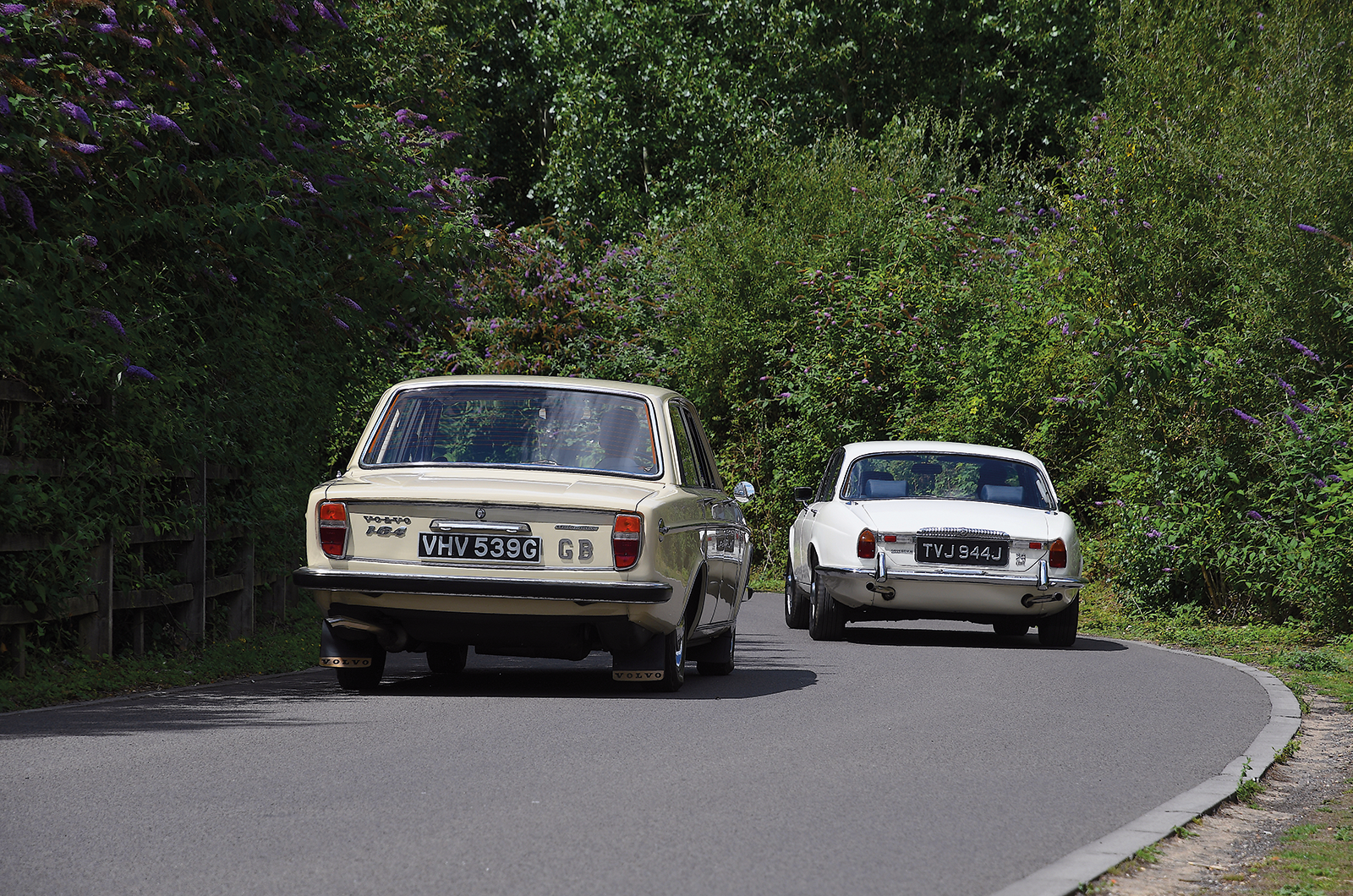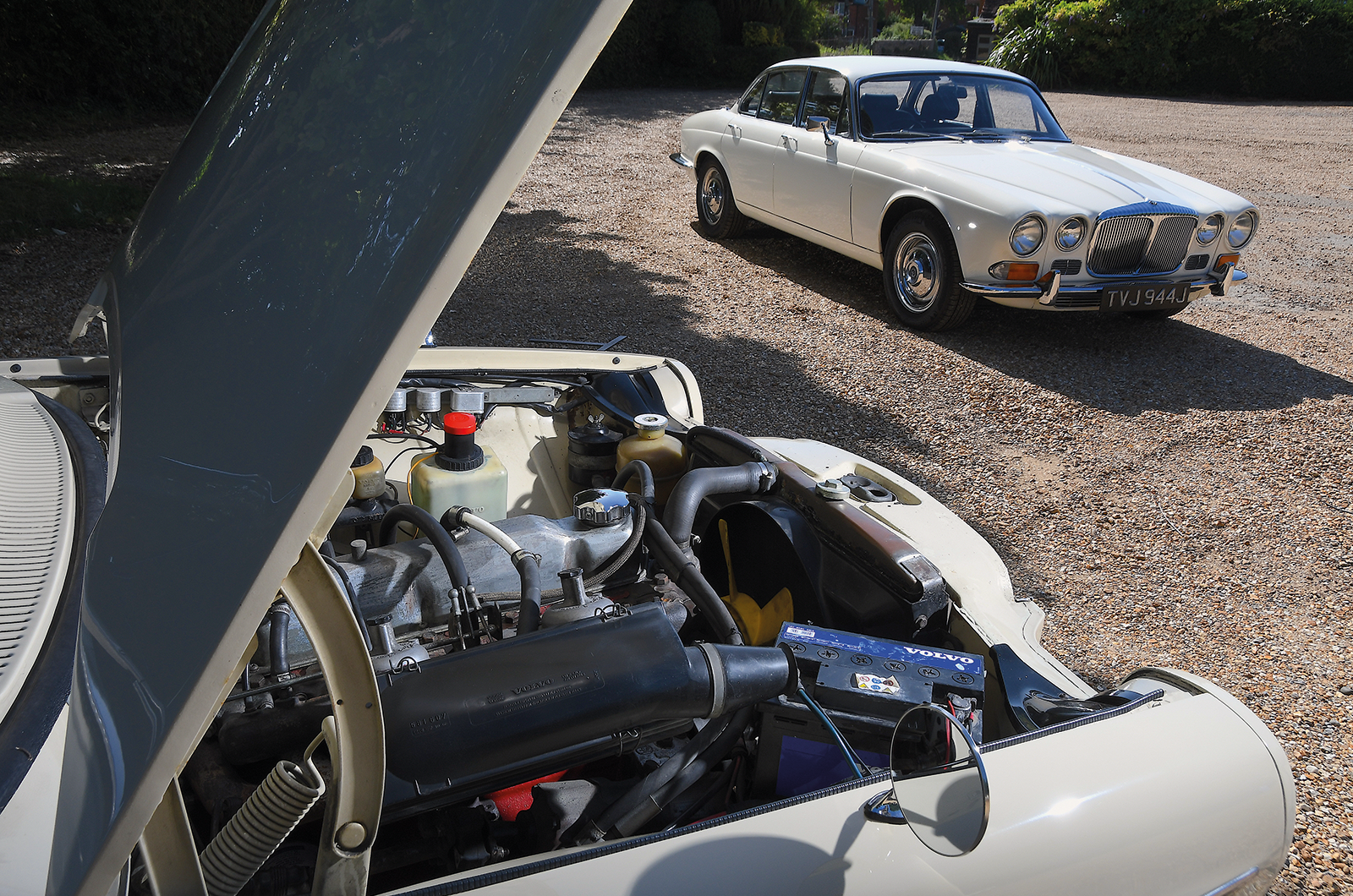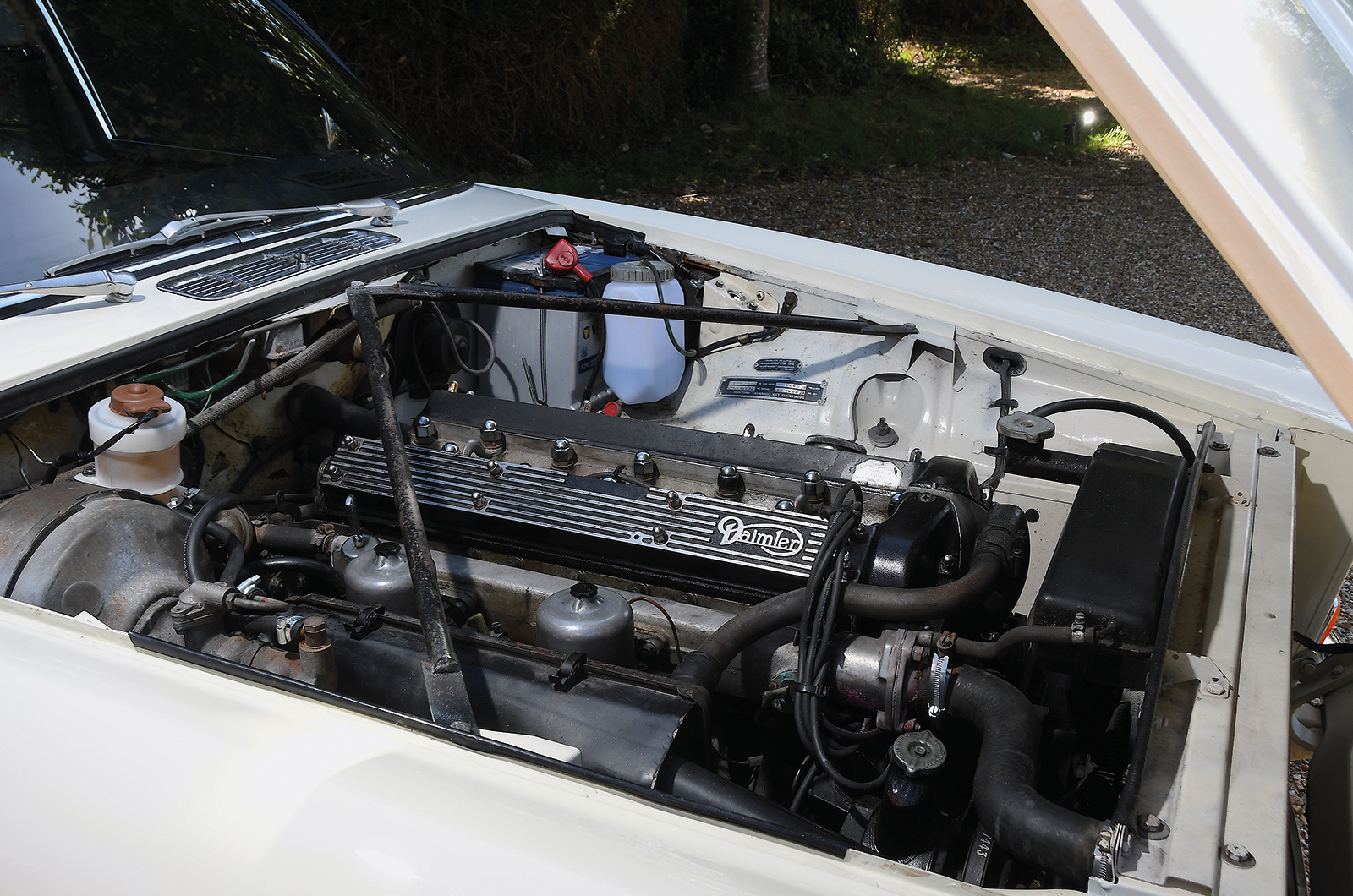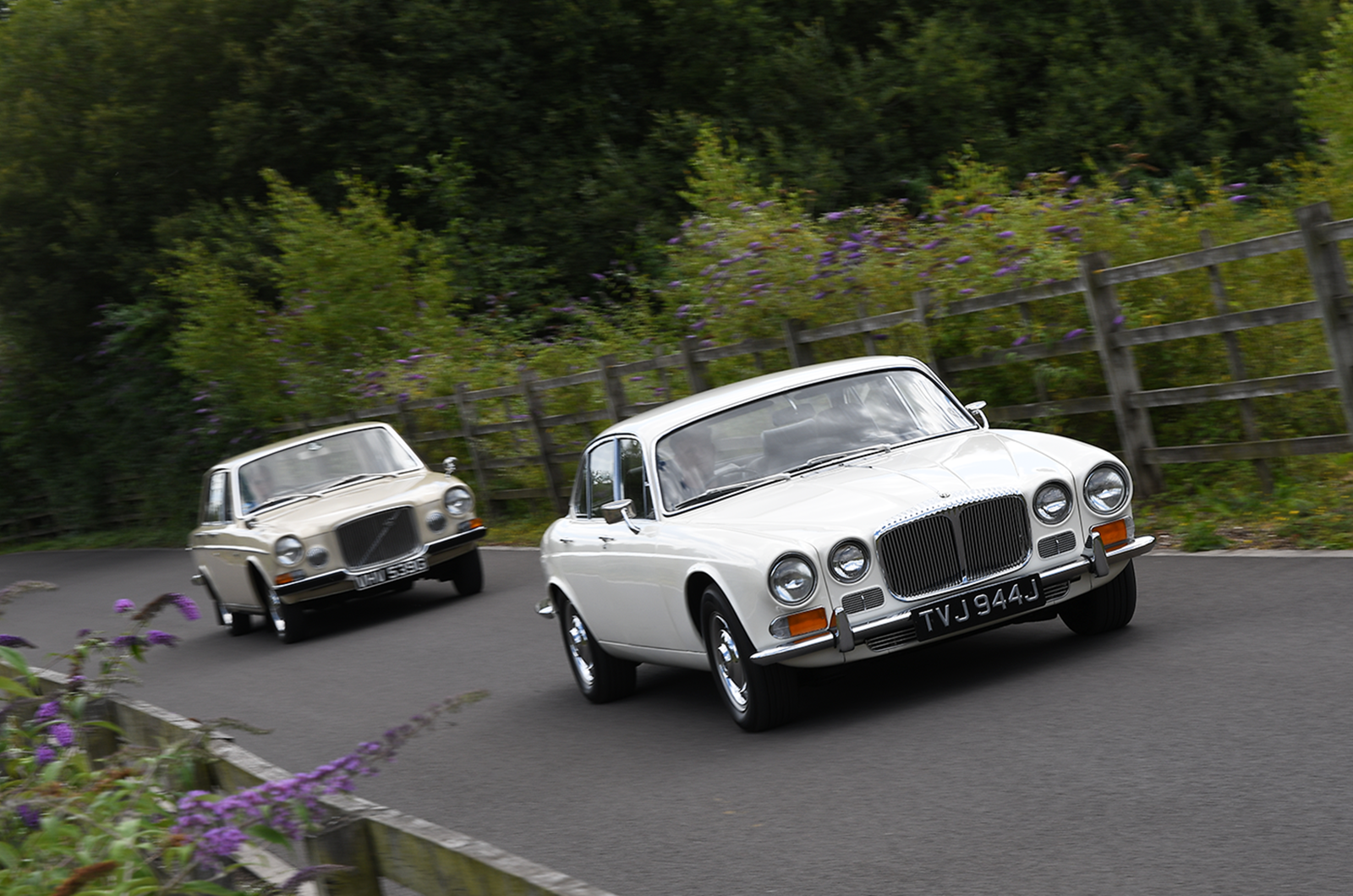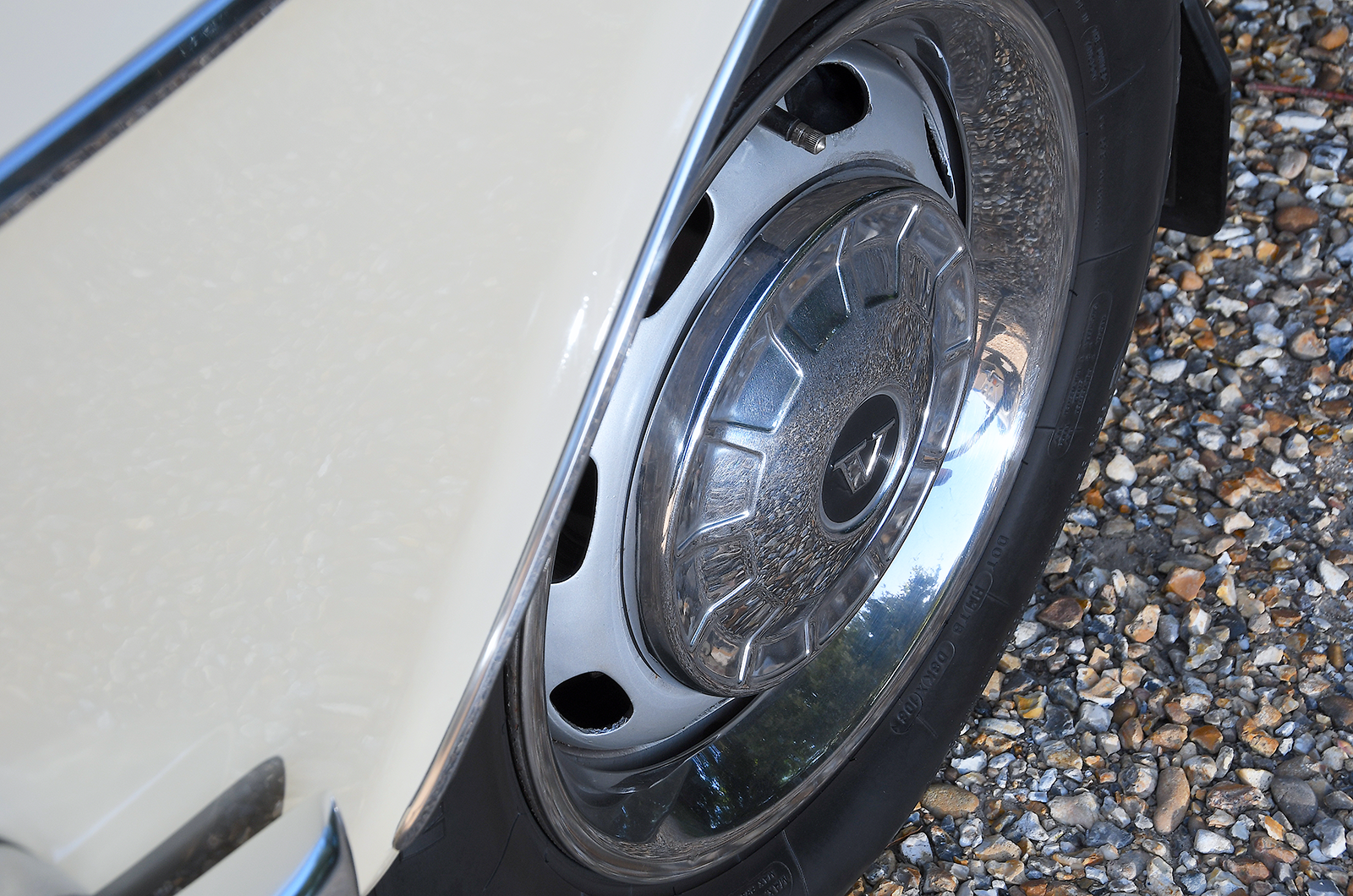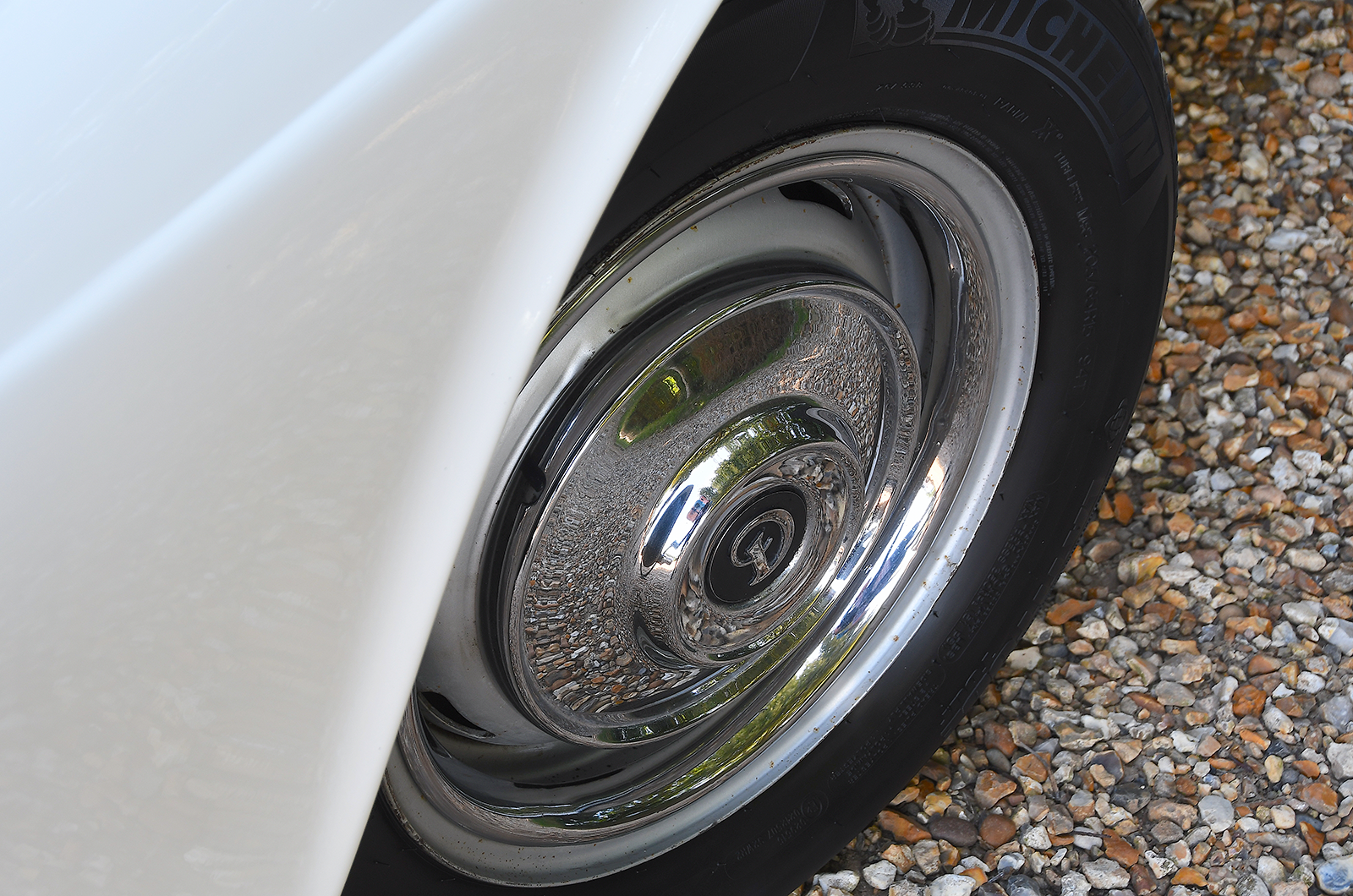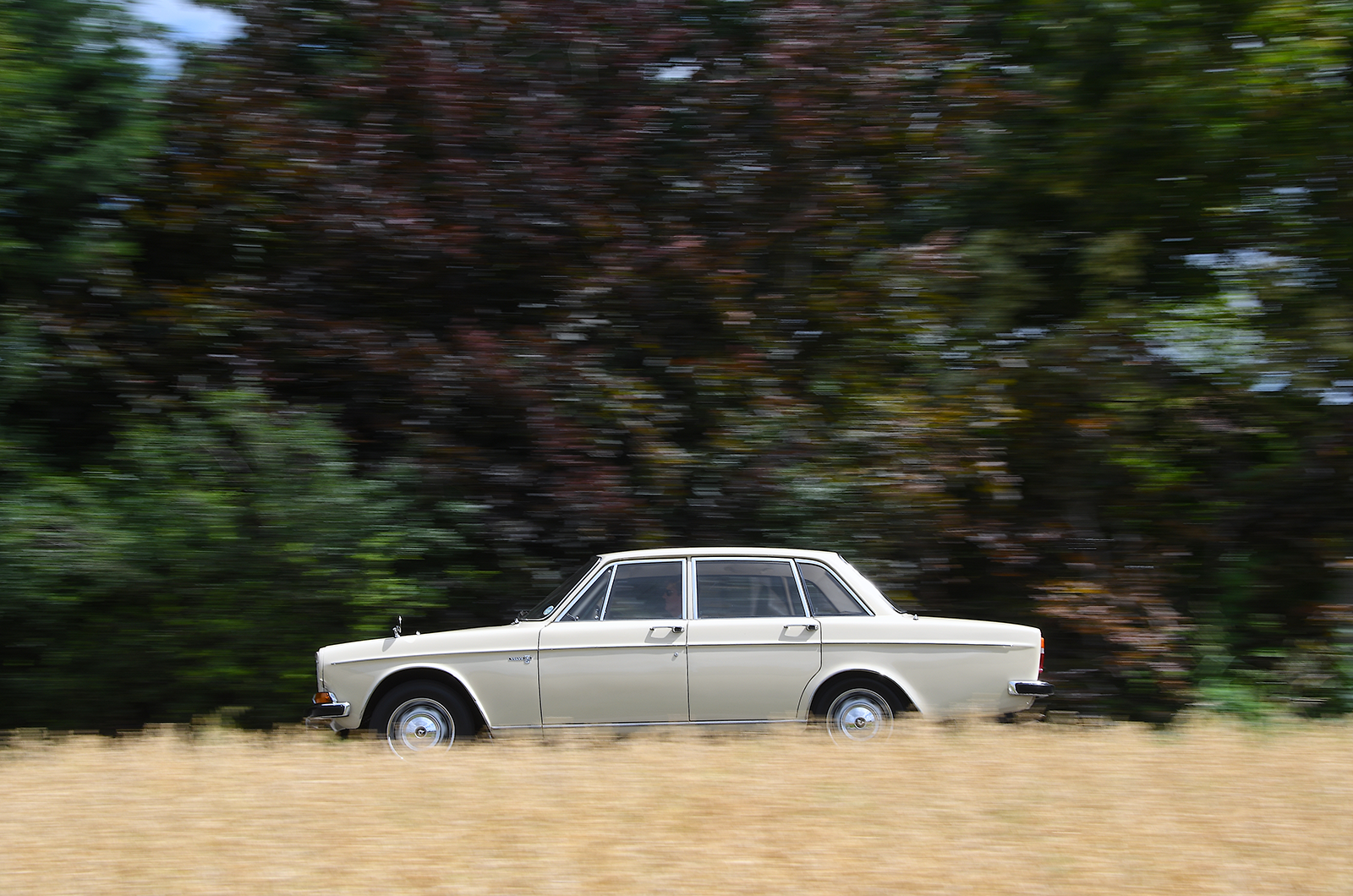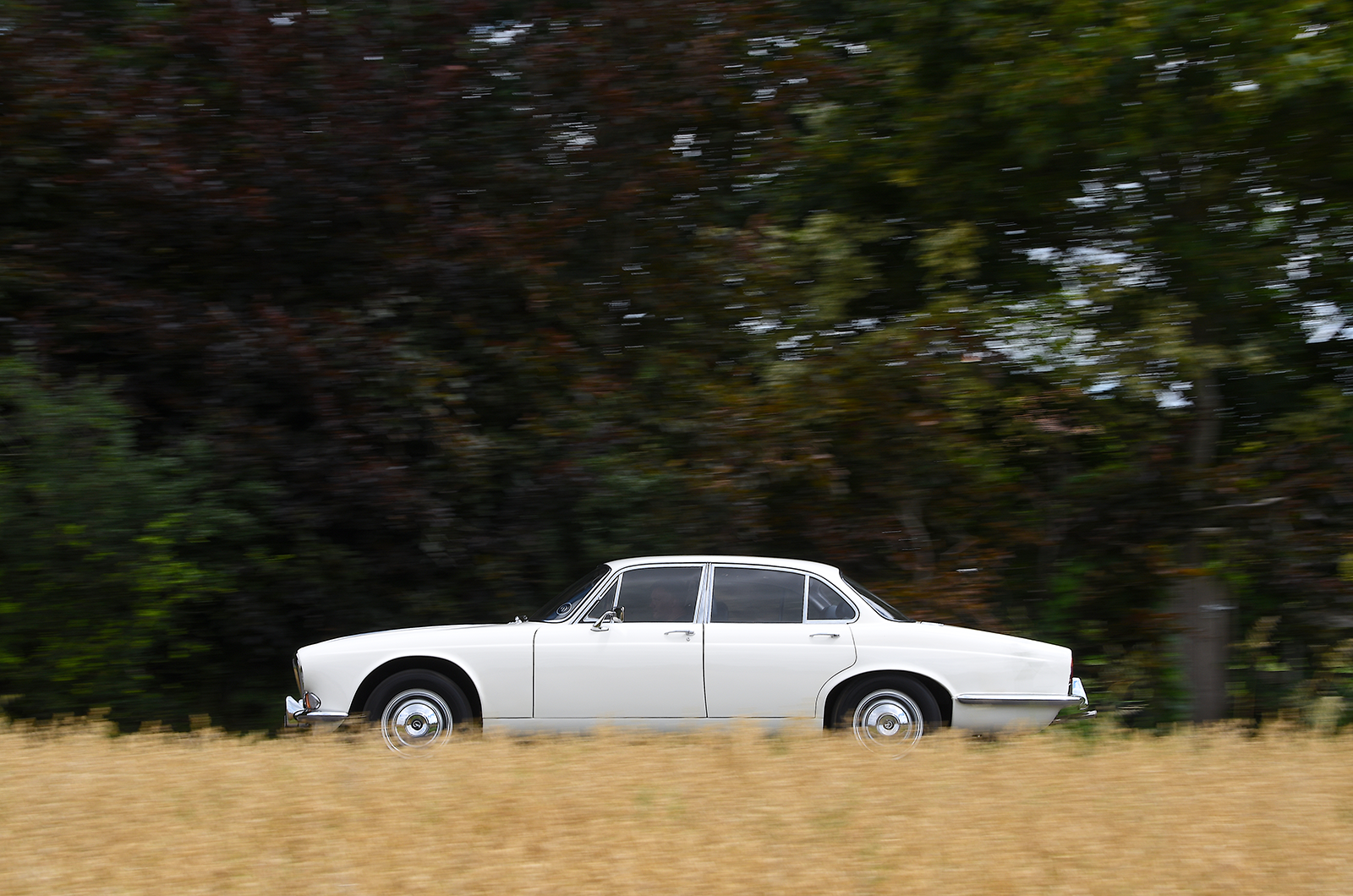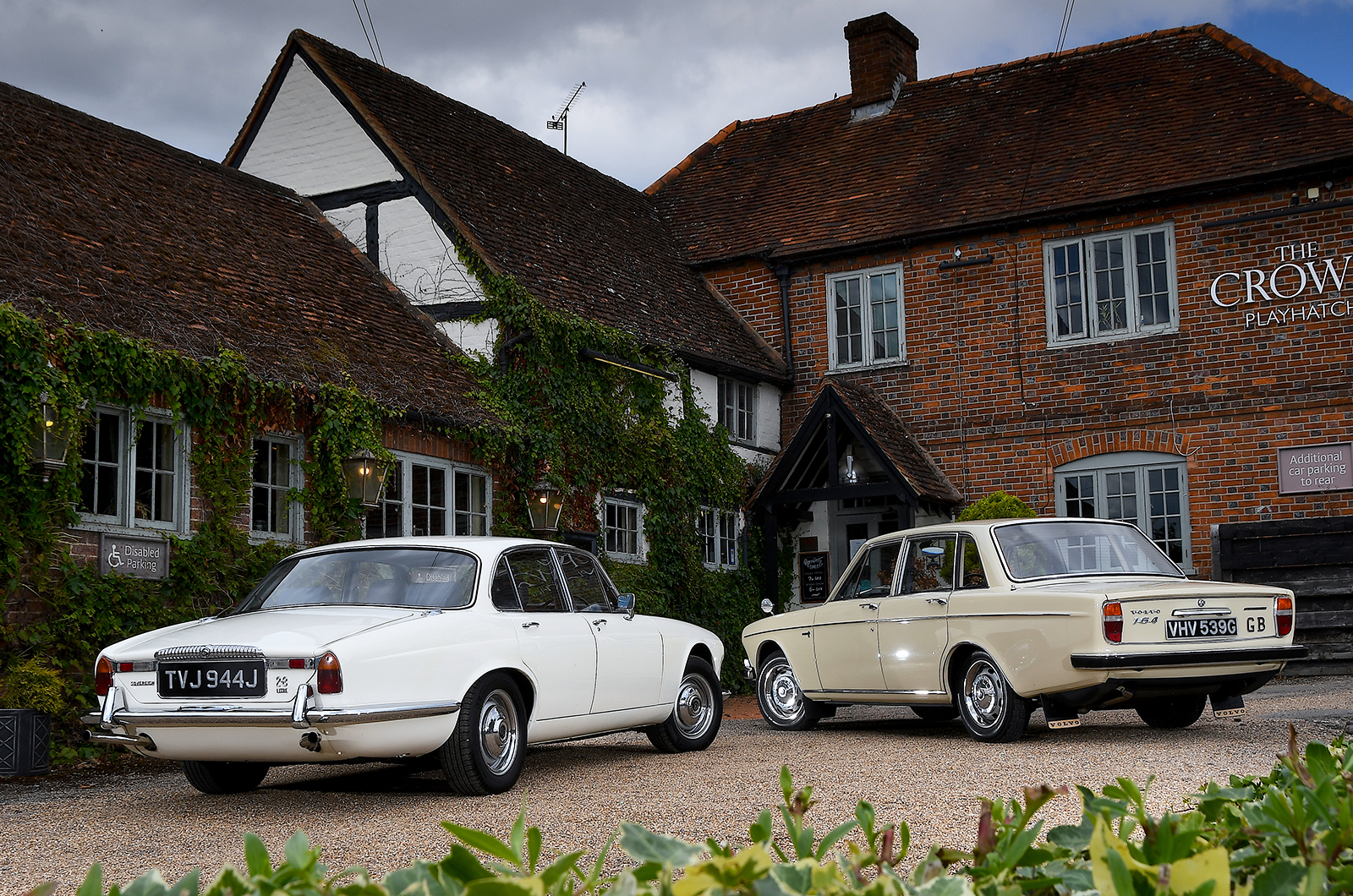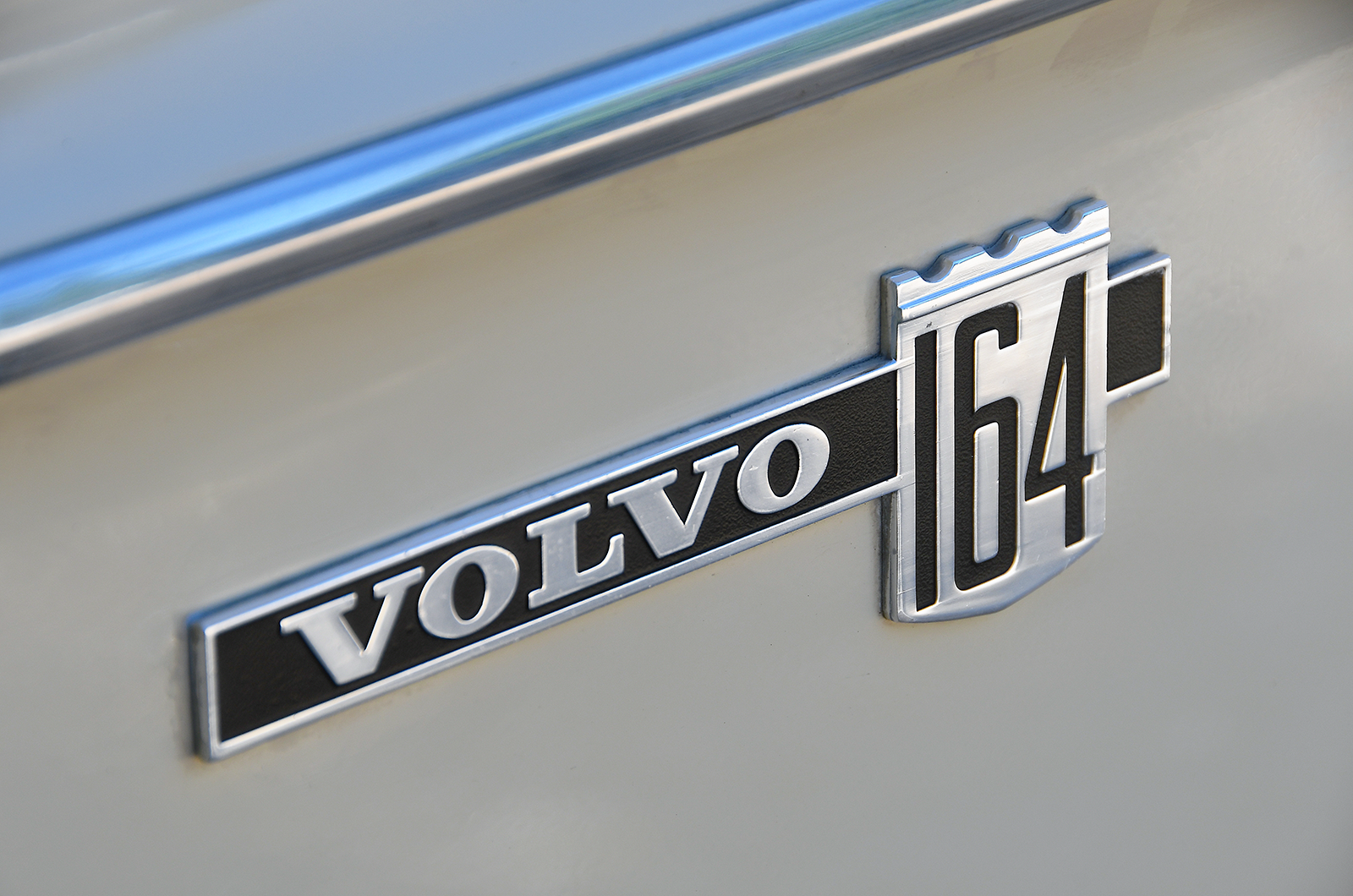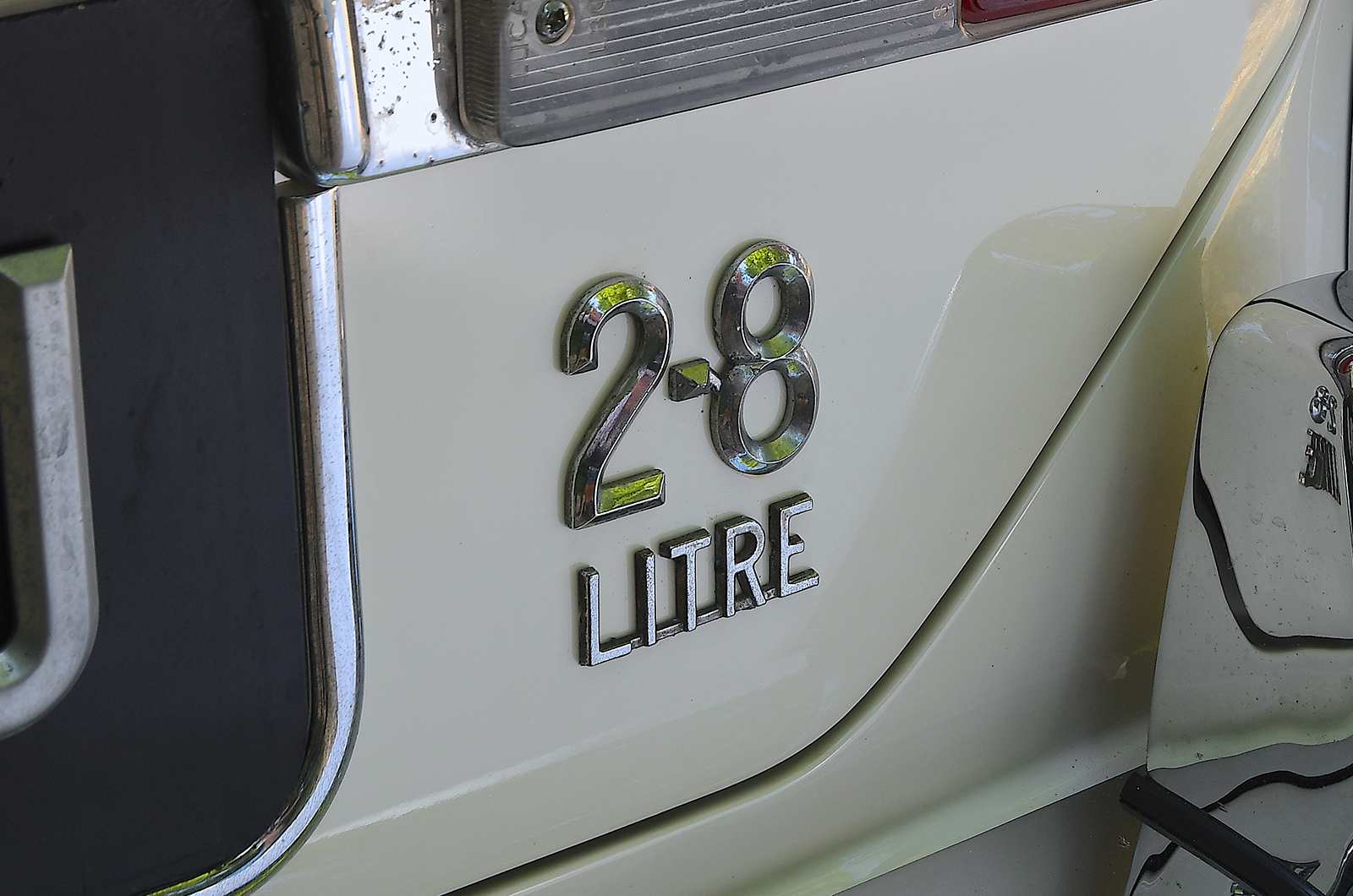Yeulett’s grandfather purchased VHV 539G new in 1969 as a retirement present to himself, trading in his Austin A110 Westminster. “My grandad loved the Volvo,” Yeulett explains.
“When he passed away in 1989, I kept the car going and would take my grandmother out in it. The 164 stayed at their house, and I did some work on it to try and get it up to scratch.”
He took full ownership on the passing of his grandmother in 1991 and was determined to maintain the Volvo’s condition because it meant so much to its original owner.
Both cars have proved to be comfortable cruisers
In terms of road manners, the 164 is a fast and easy cruiser, aided no end by its optional power-assisted steering.
“The 3-litre straight-six will easily keep up with modern traffic and is no stranger to the fast lane,” says Yeulett.
“People do a double-take when being overtaken by a 51-year-old Swede. Most classics can be tiring to drive over a longer journey, but the 164 simply glides along.
“I took it to Goodwood in 2019 and droved own the night before to meet some colleagues. The 100-mile trip was a blast, and I felt completely fresh on arrival. The suspension is very forgiving, although spirited driving will induce body roll in the corners.”
He echoes the observations of the Motor road test, that the 164 had ‘little sporting appeal’. “It’s not really what she was built for,” he admits.
The straight-six 164 was a revival of the six-pot Volvo (left); the Daimler’s 2.8-litre, twin-carb unit
Childhood memories similarly prompted Newnham to acquire his Daimler: “My father owned an identical car when I was a boy, and I told him at six years old that I would own one some day. And I did just that.”
The cream 2.8 was discovered by chance and, even more incredibly, it was a one-owner car that was the same year, colour and specification as his dad’s. The car had been dry-stored since 1978.
“A mild rolling restoration has kept it on the road since,” its owner reveals. “In 2019 I treated it to some fresh paint and a Vanden Plas interior.
“The floor and sills have never been welded and are totally original. It now has 46,000 miles on the clock, and had 43,000 when I bought it.”
Newnham finds the Sovereign to be very smooth. “The steering is exceptionally light,” he says. “With minor upgrades, electronic fuel pumps and ignition, the Daimler is now very reliable. It is far more comfortable than our family Mercedes C-Class.”
“Naturally, the Daimler and the Volvo attract a great deal of public attention, as befitting machinery of such distinction”
Jaguar intended the 2.8-litre unit to appeal to overseas customers, where smaller engines attracted tax concessions.
In reality it suffered from both in-house competition and complaints about holed pistons.
However, Newnham believes it to be a great engine. “It is not as powerful as a 3.4 or a 4.2, of course, but it’s not for racing about in,” he says.
“The Borg-Warner automatic ’box suits the car, but it obviously feels very different to the manual version.”
Both are sufficiently fast and very comfortable in every day driving
Naturally, the Daimler and the Volvo attract a great deal of public attention, as befitting machinery of such distinction.
“The Sovereign has become much more of a ‘stop and stare’ car in the past five years or so,” admits Newnham.
“When I first bought it, in 2007, only a few people would pause and mention it. Now most passers-by comment on how lovely it is.”
“The 164 stands out quite a bit on the school run,” adds Yeulett. “I’ll never sell it – I’ll pass it on to one of my sons to own, run and enjoy.”
“To encounter both the Sovereign and 164 together in the metal is to be reminded of their almost indefinable poise”
These very different but equally impressive machines would have co-existed in period in an atmosphere of mutual respect.
The Volvo more than lives up to its memorable slogan, ‘A civilised car built for an uncivilised world,’ and was ideal for a solicitor who regarded colour television to be the outer limit of contemporary living.
You can equally imagine a Peter Bowles-style young barrister piloting the Daimler from Lincoln’s Inn after a productive meeting.
And anyone who questions theSovereign ’s important place in the XJ family has probably never experienced the curtain-twitching social judgement that was just a part of life in the Home Counties, circa 1969.
Images: John Bradshaw
Thanks to Jaguar Drivers’ Club; The Crown in Playhatch; Thames and Kennet Marina
Factfiles
Volvo 164
- Sold/number built 1968-’75/146,008
- Construction steel monocoque
- Engine all-iron, ohv 2978cc straight-six, twin Zenith carburettors
- Max power 130bhp @ 5000rpm
- Max torque 152Ib ft @ 2500rpm
- Transmission four-speed manual with optional overdrive or three-speed auto, RWD
- Suspension: front independent, by wishbones, anti-roll bar rear live axle, radius arms, transverse link; coil springs, telescopic dampers f/r
- Steering power-assisted worm and roller
- Brakes discs, with servo
- Length 15ft 6in (4724mm)
- Width 5ft 8¼in (1733mm)
- Height 4ft 9¼in (1454mm)
- Wheelbase 8ft 10½in (2705mm)
- Weight 3270lb (1483kg)
- 0-60mph 11.3 secs
- Top speed 108mph
- Mpg 20
- Price new £2048 12s 6d
- Price now £5-20,000*
Daimler Sovereign 2.8
- Sold/number built 1968-’73/3221
- Construction steel monocoque
- Engine iron-block, alloy-head, dohc 2792cc straight-six, twin SU carbs
- Max power 180bhp @ 6000rpm
- Max torque 182Ib ft @ 3750rpm
- Transmission Borg-Warner Type 35 three-speed automatic, RWD
- Suspension independent, at front by semi-trailing double wishbones, anti-roll bar rear lower wishbones, driveshafts as upper links, radius arms; coil springs, telescopic dampers f/r
- Steering power-assisted rack and pinion
- Brakes discs, with servo
- Length 15ft 9½in (4816mm)
- Width 5ft 9¾in (1772mm)
- Height 4ft 5in (1343mm)
- Wheelbase 9ft 1in (2764mm)
- Weight 3389lb (1537kg)
- 0-60mph 11 secs
- Top speed 118mph
- Mpg 17
- Price new £2356
- Price now £7-28,000*
*Prices correct at date of original publication
READ MORE
Cut-price cruise liners: Volvo 262 C and 780 Bertone
The Daimler Dart that never was – and the earliest SP250
Why the Jaguar XJ is the world’s best saloon car
Andrew Roberts
Andrew is a long-time contributor to Classic & Sports Car
